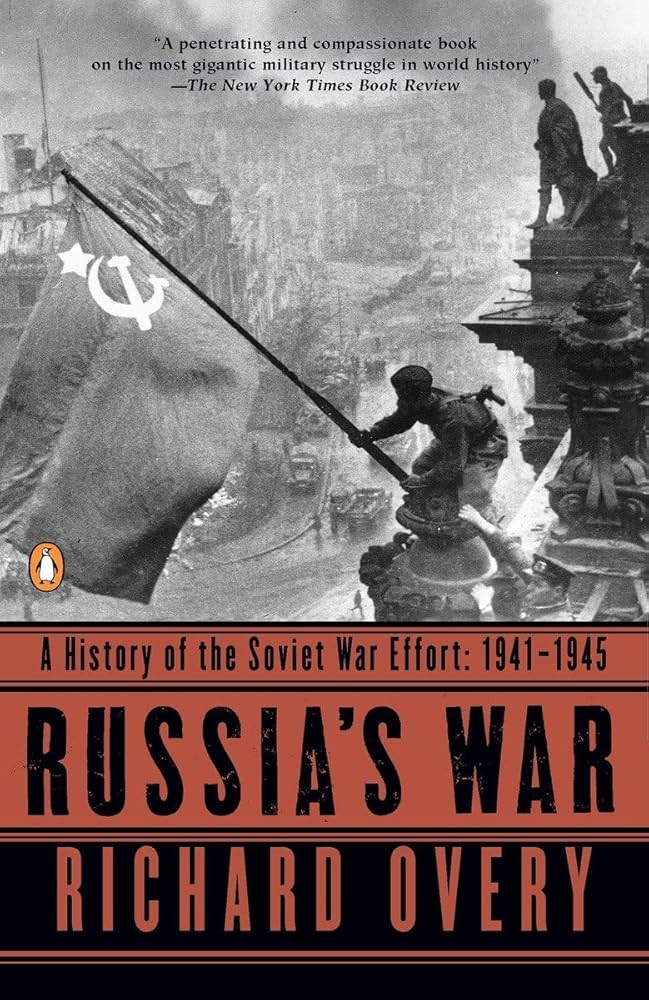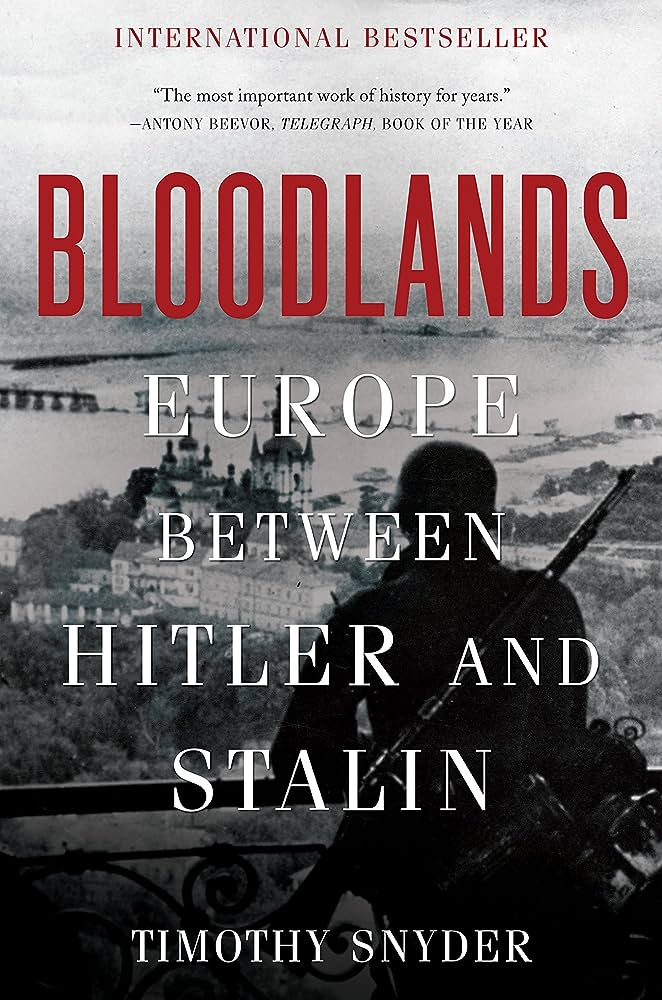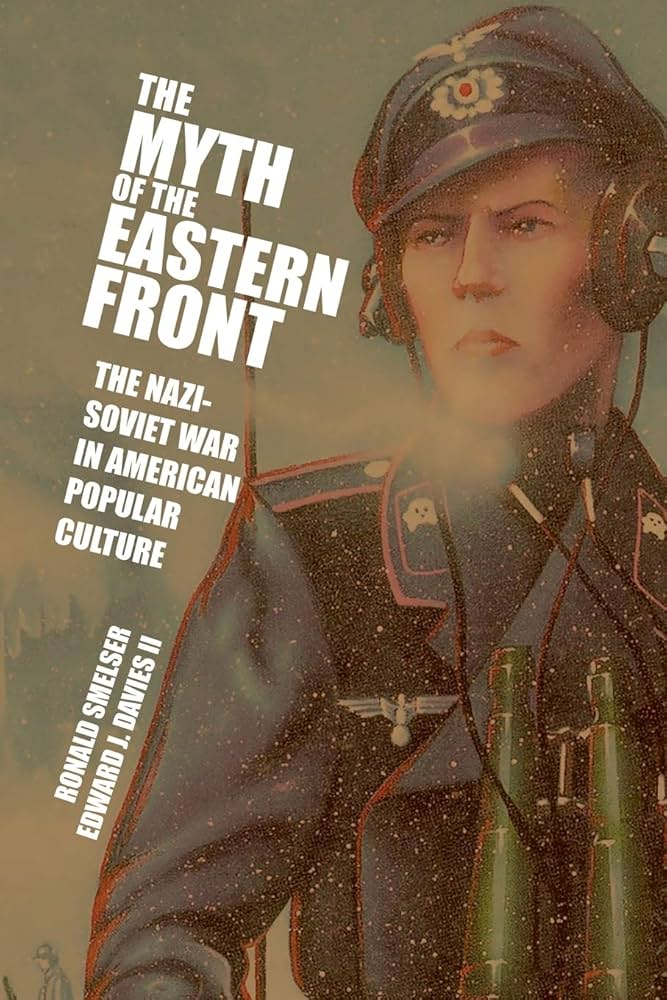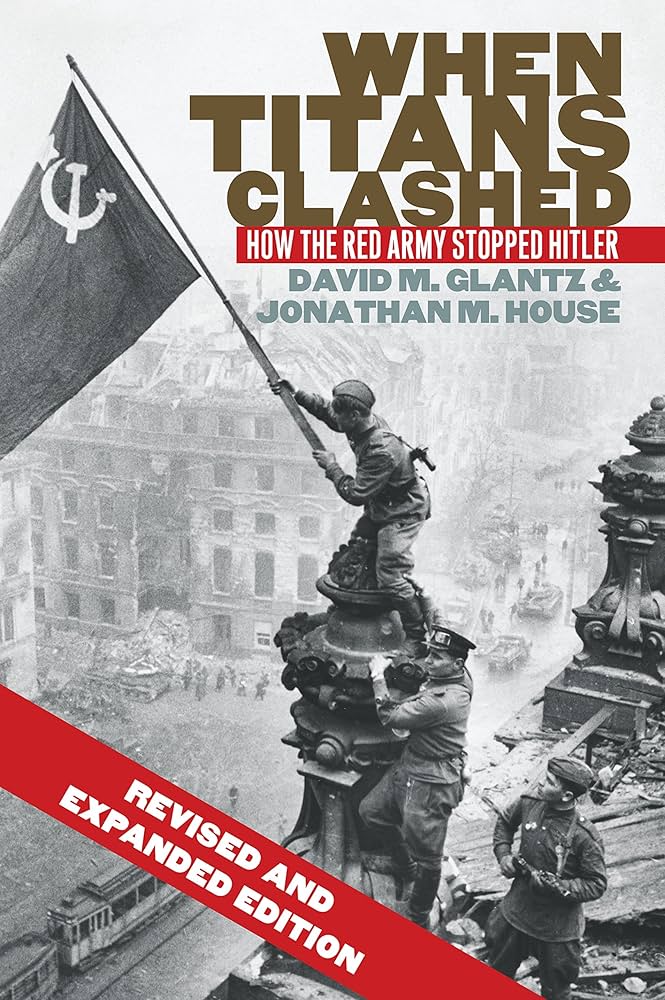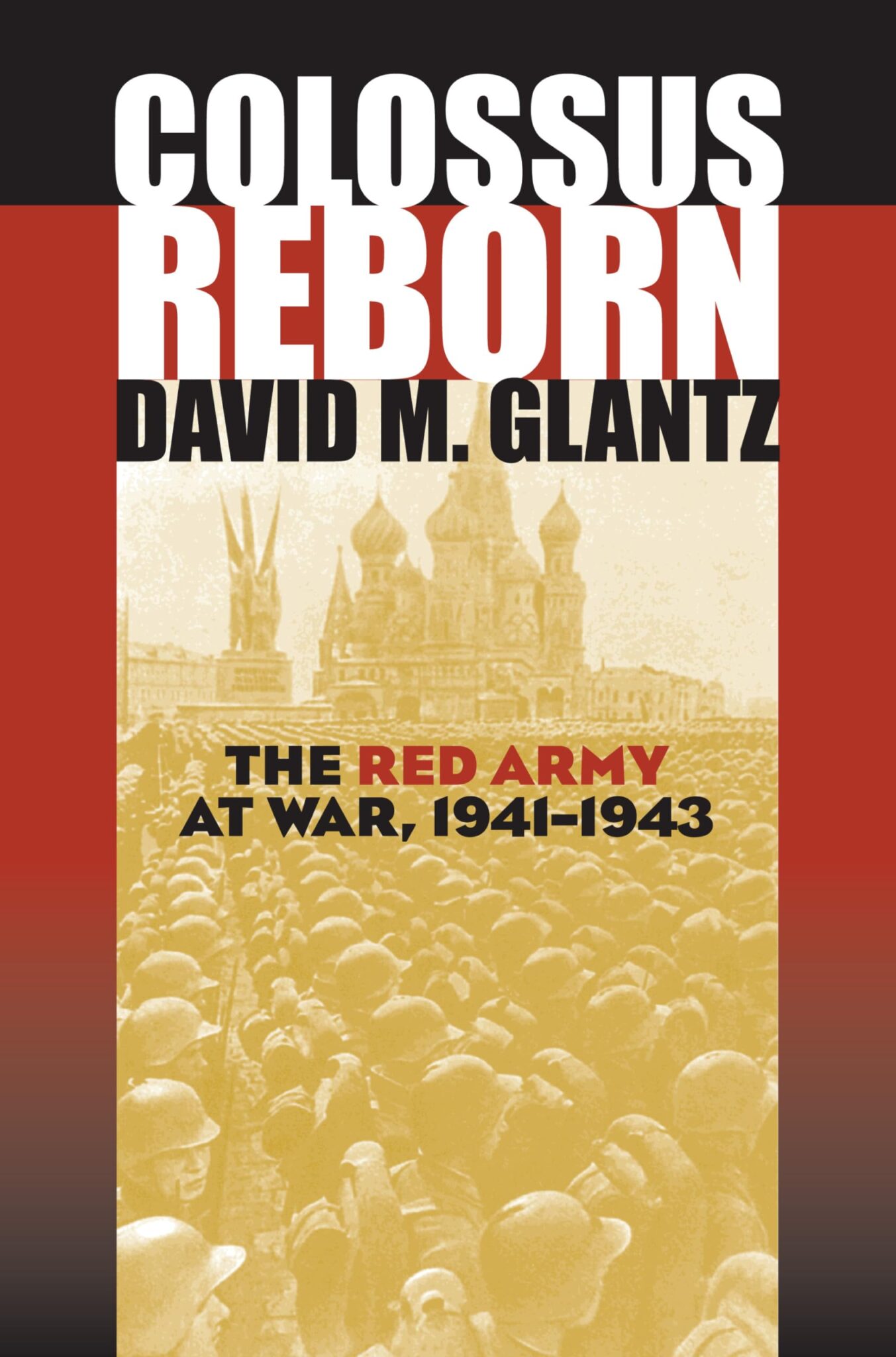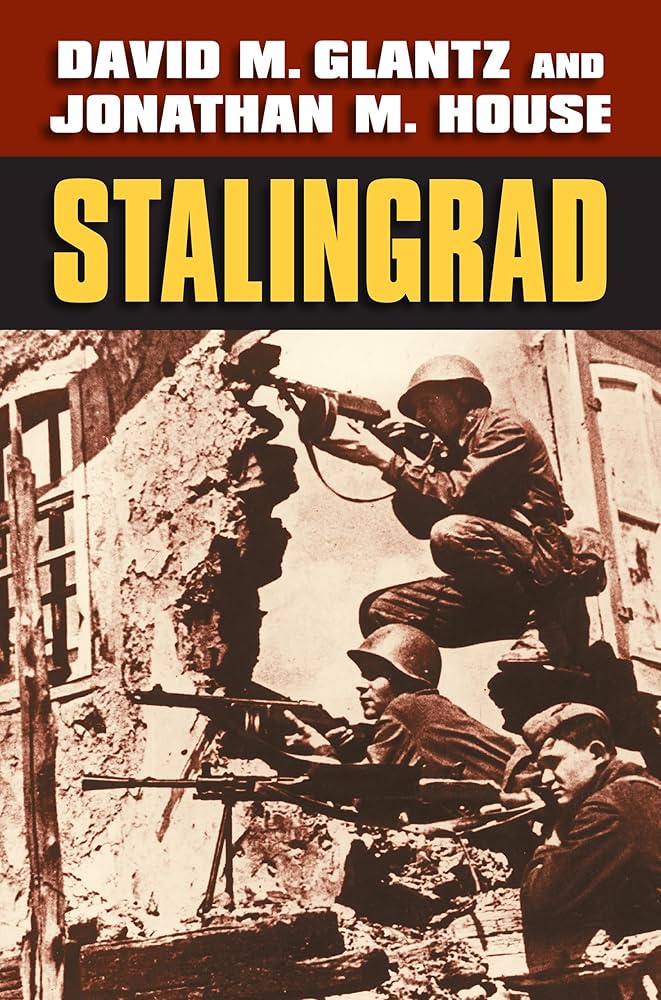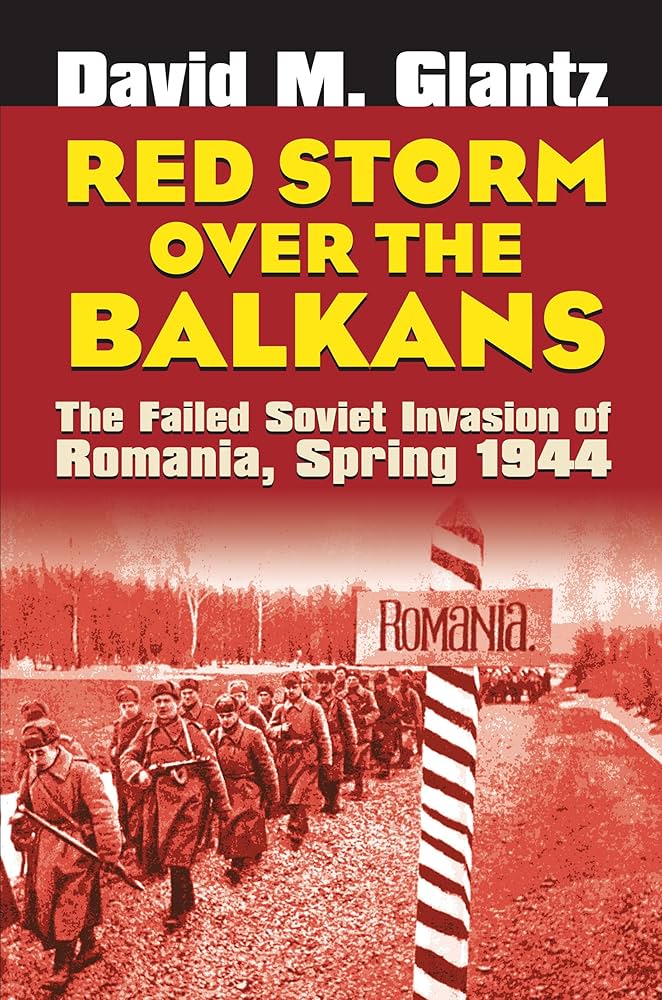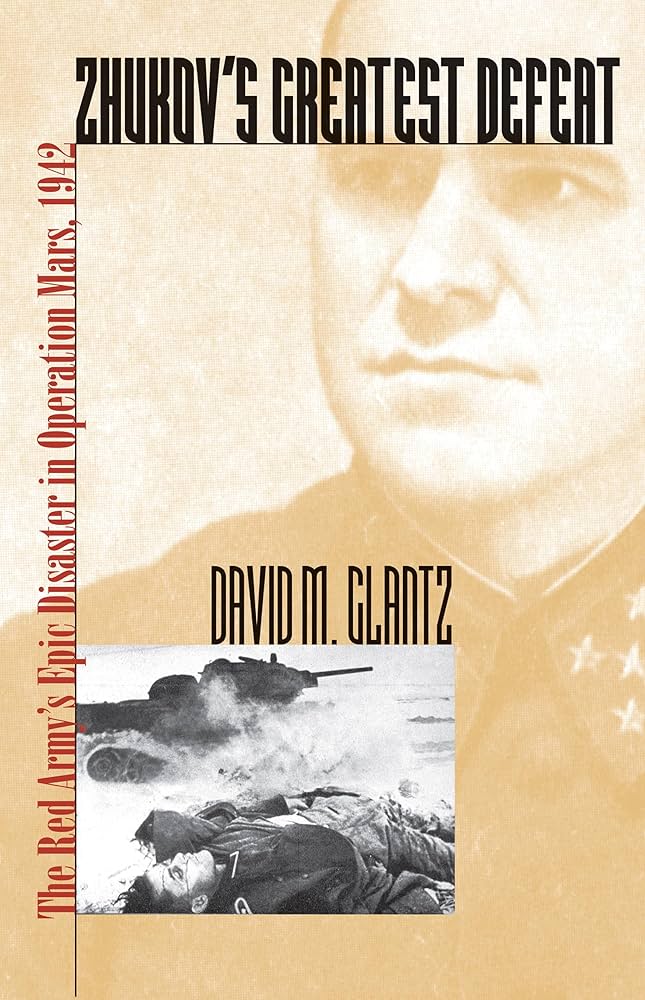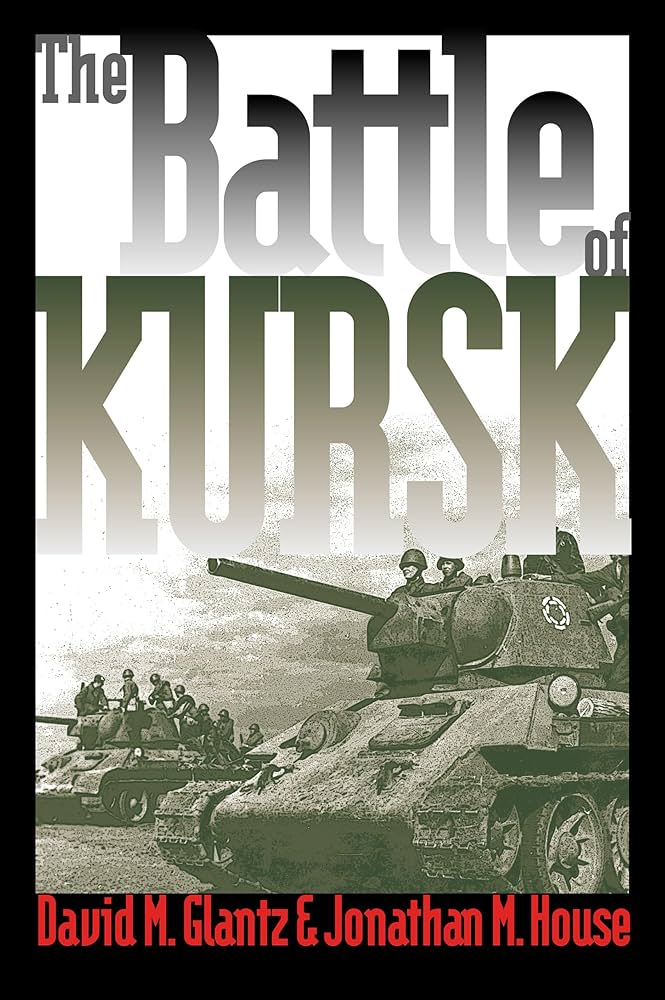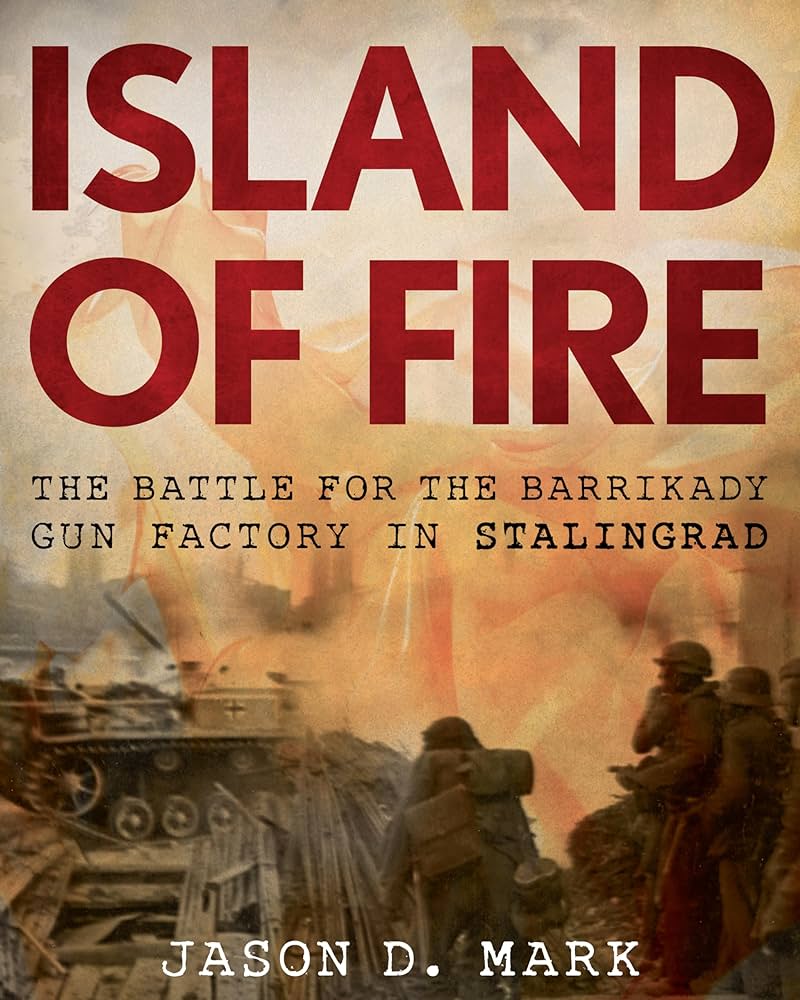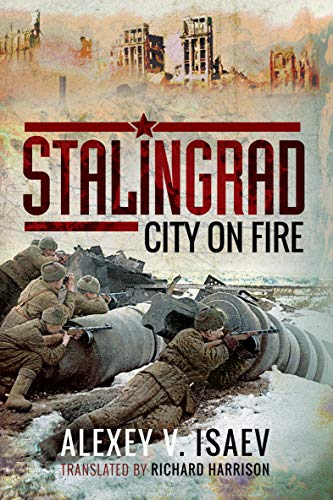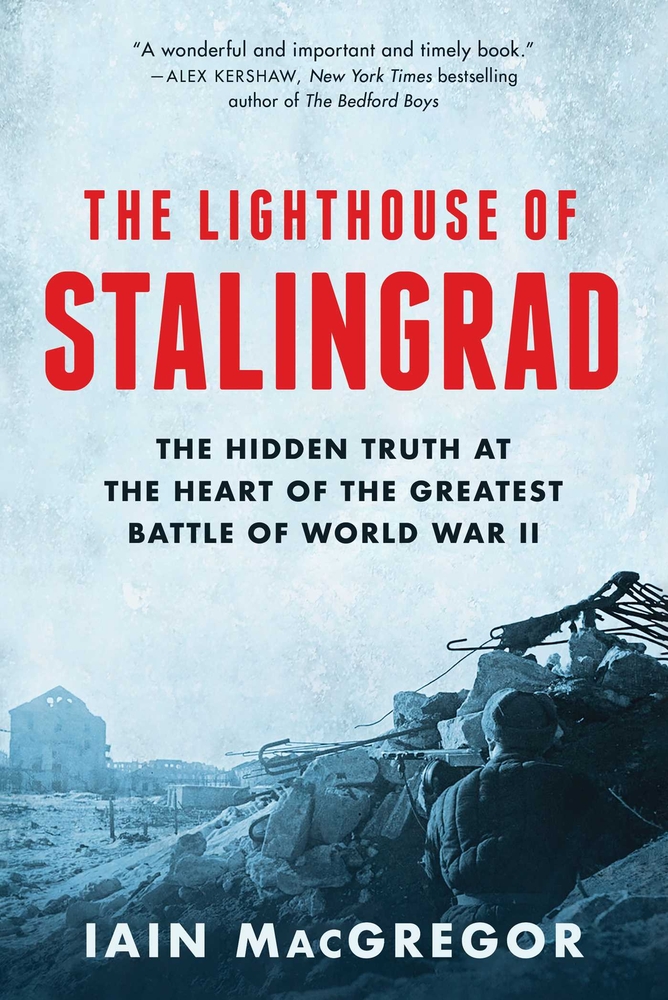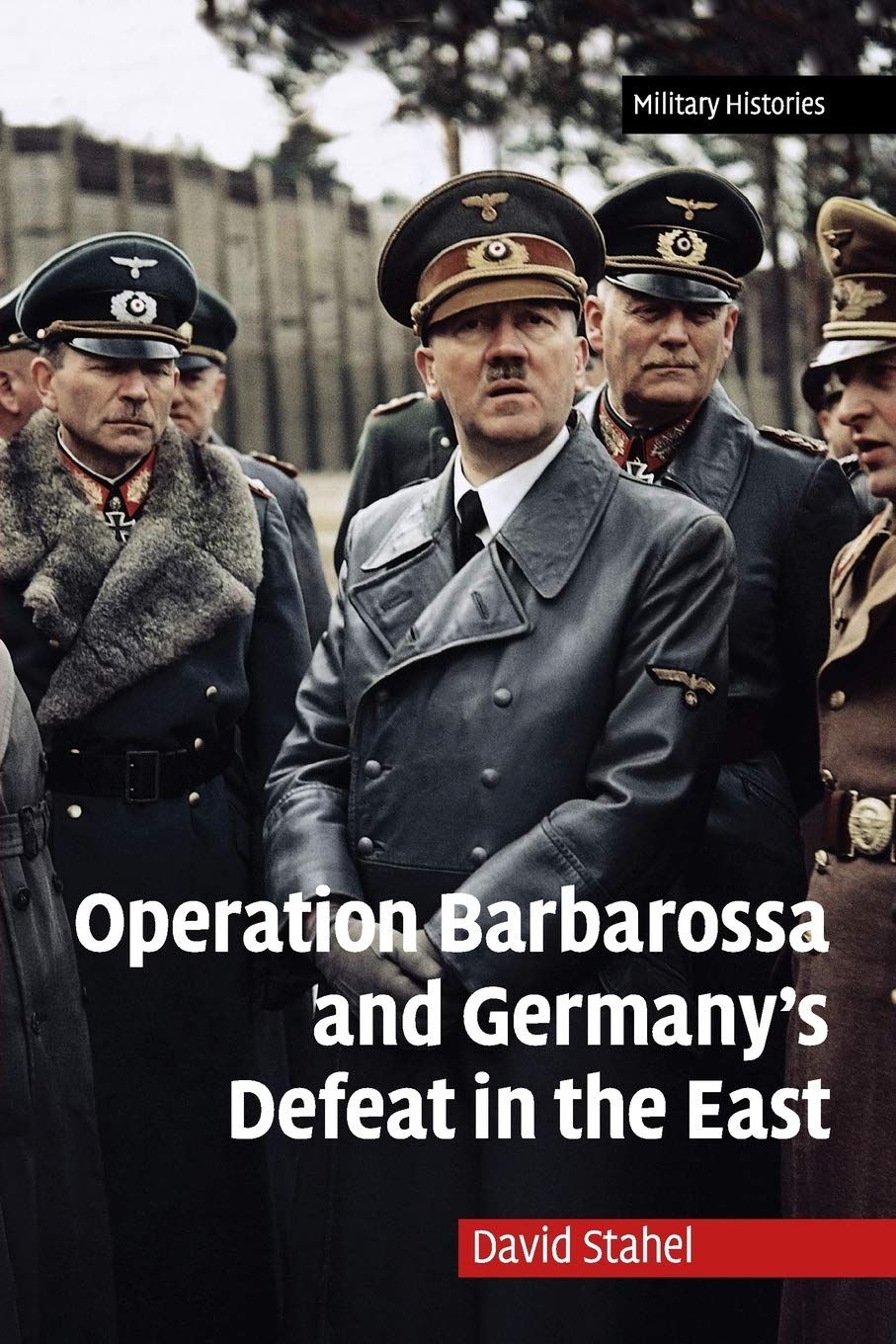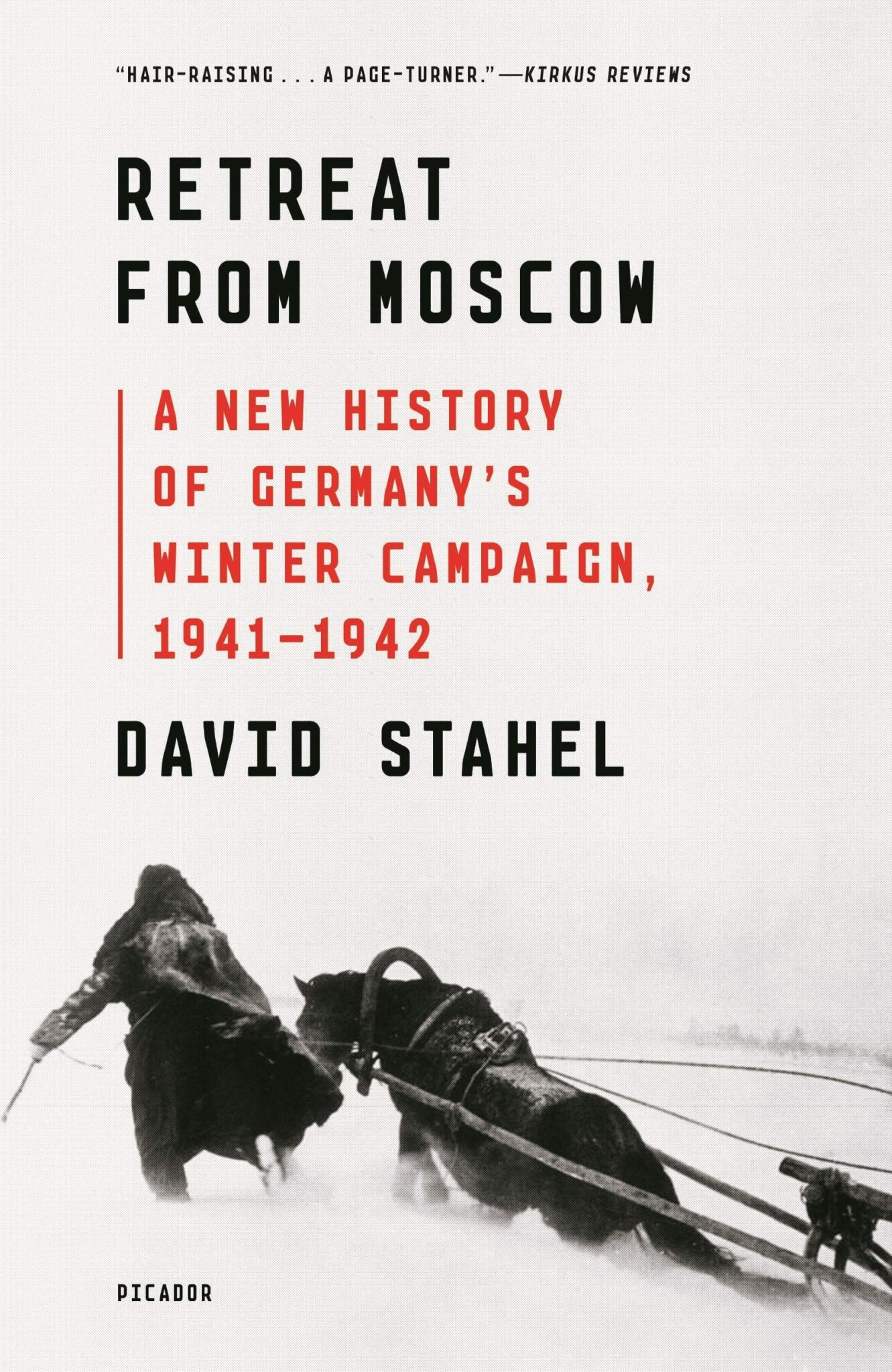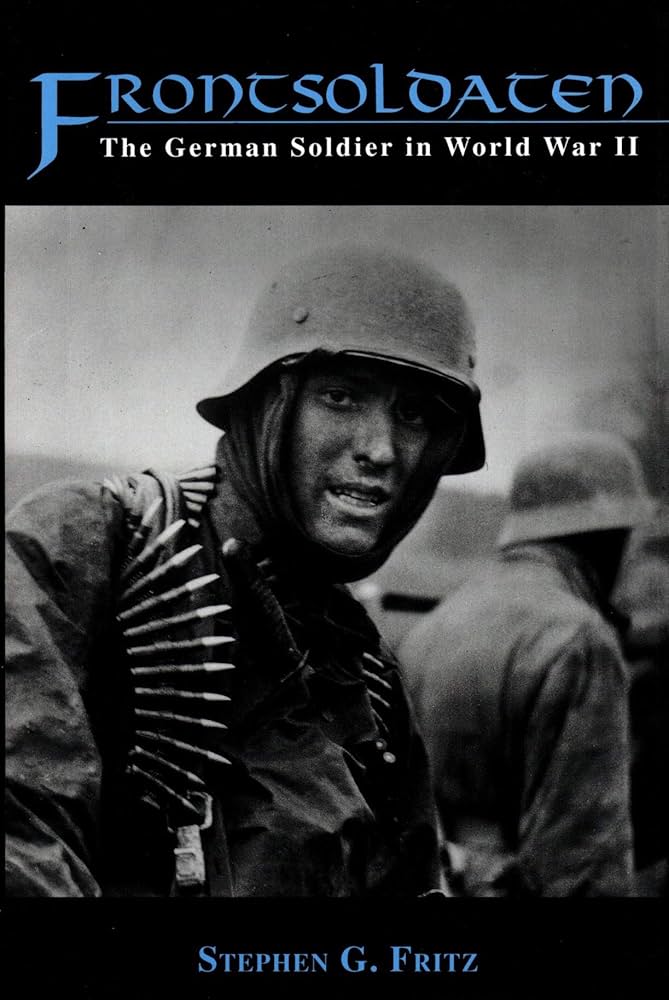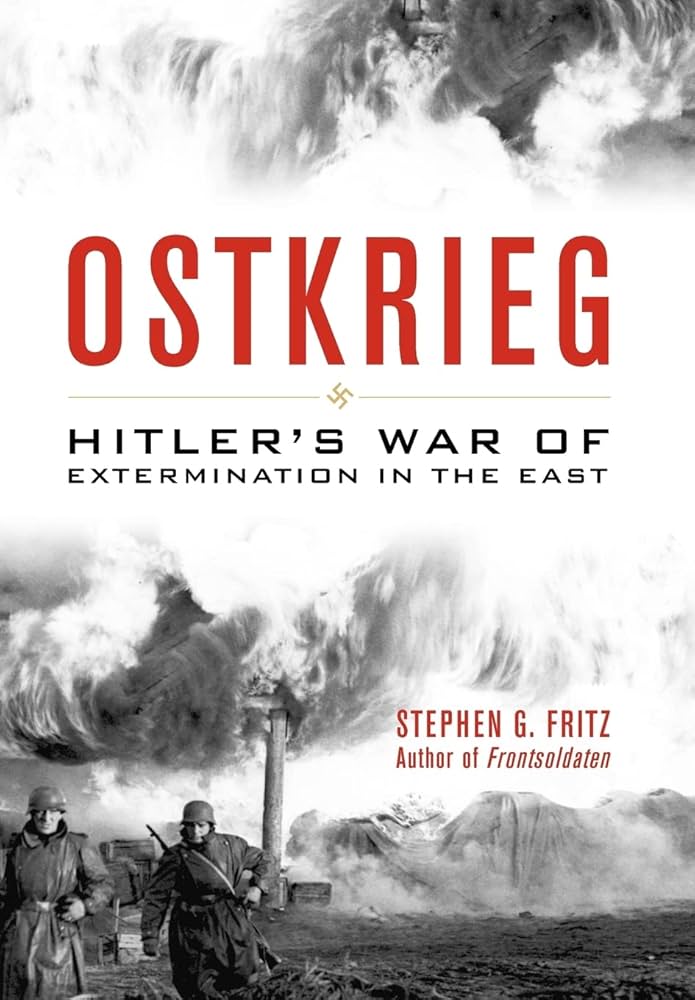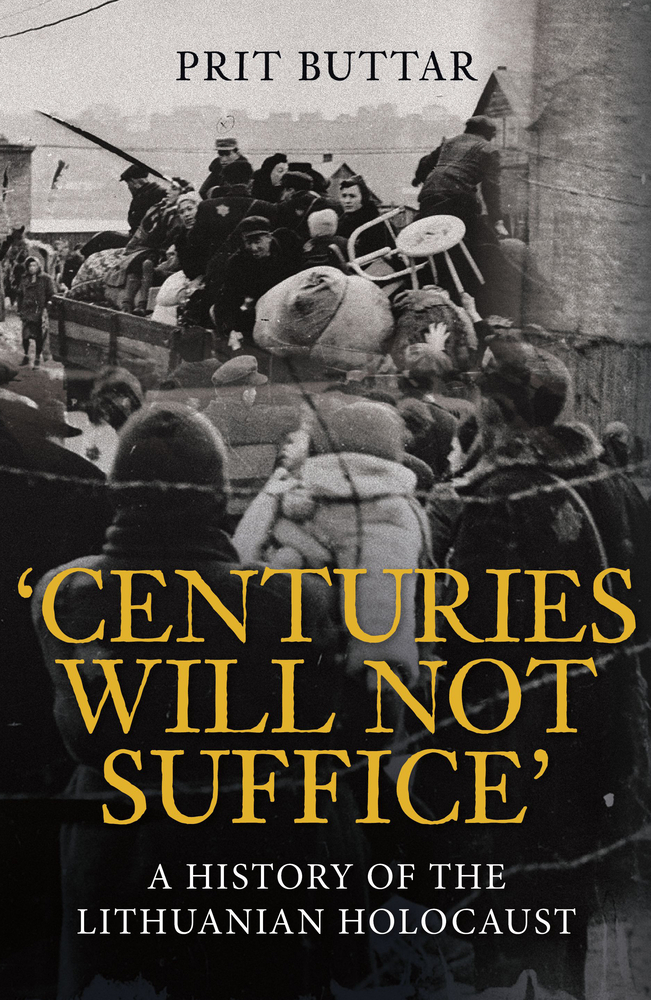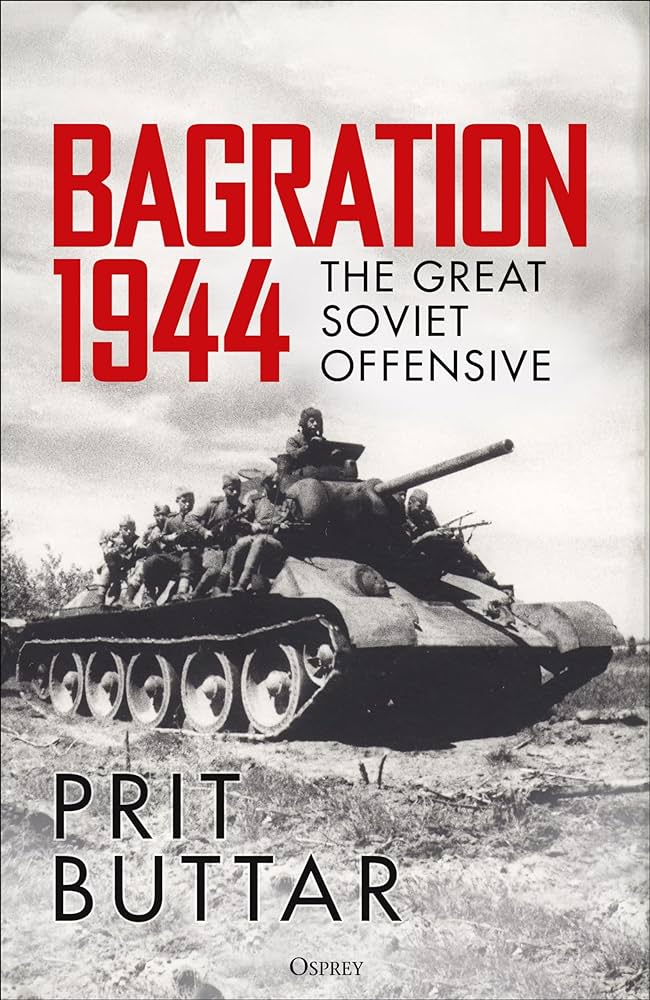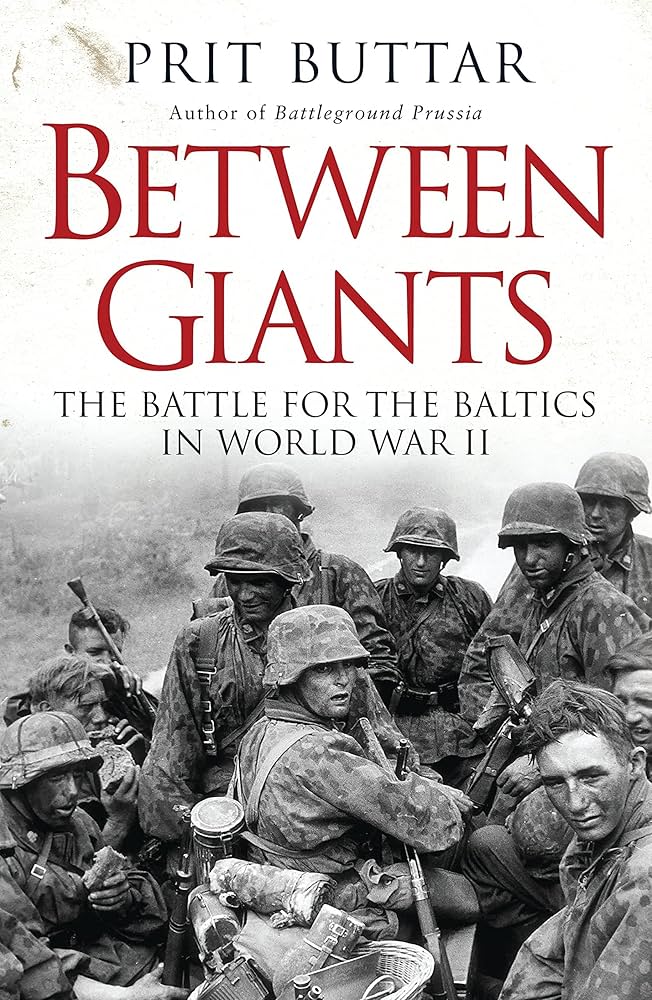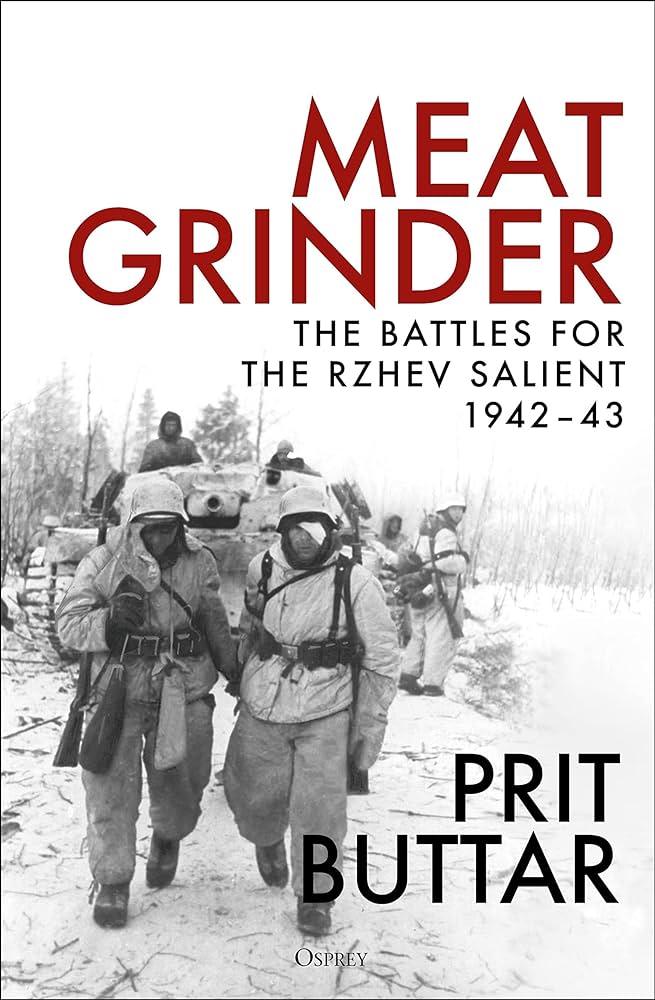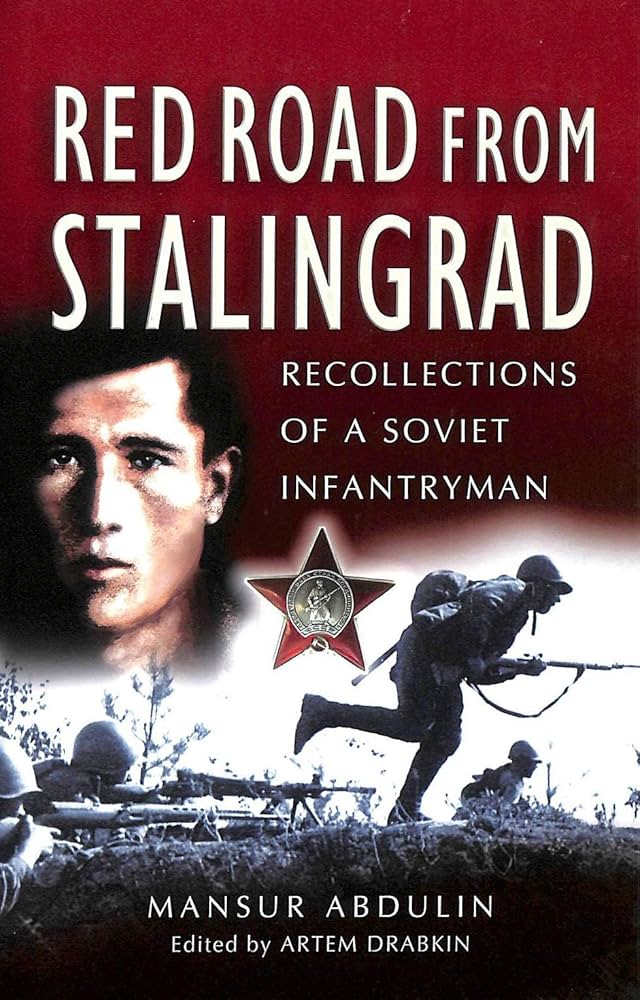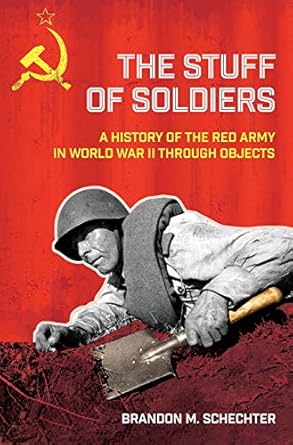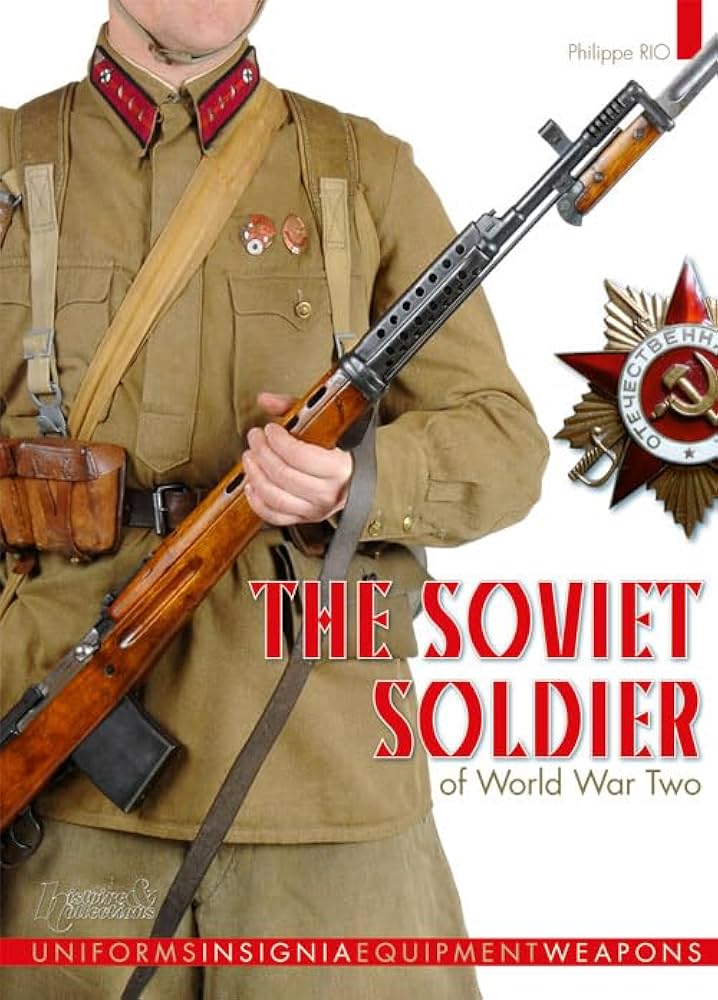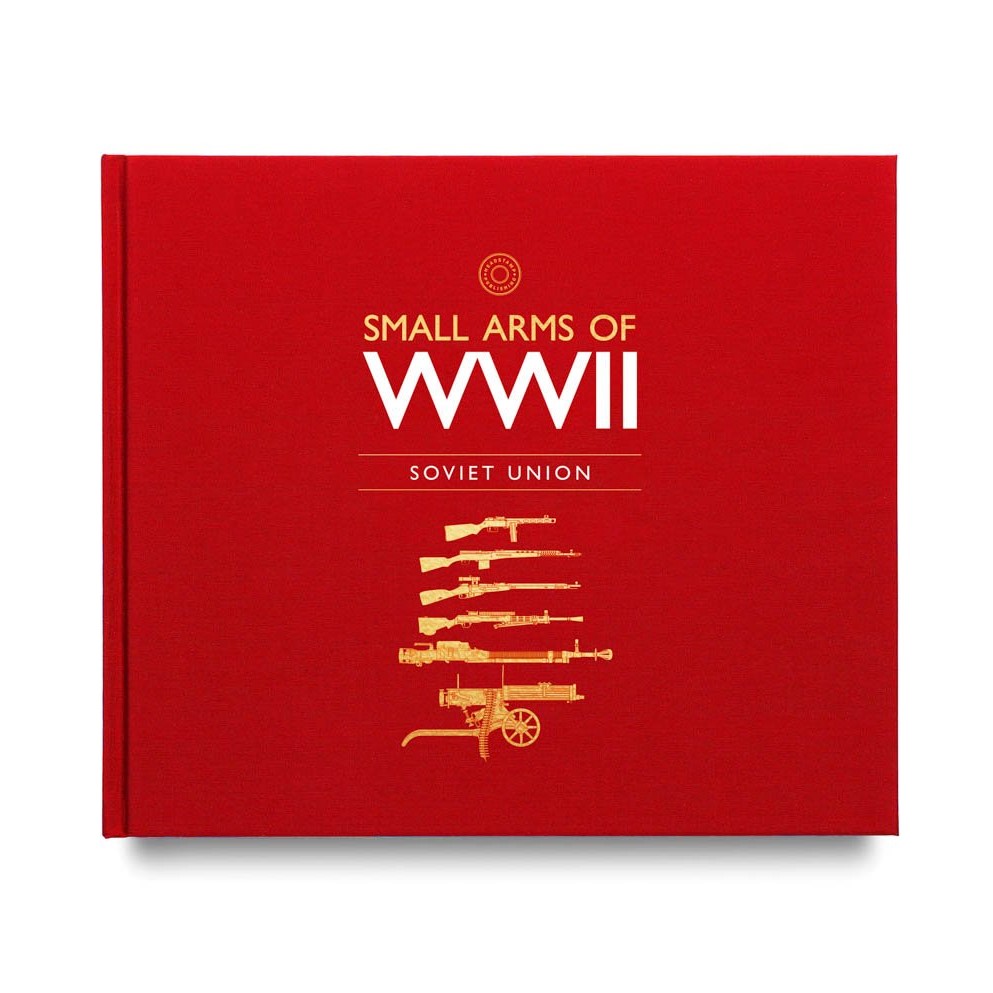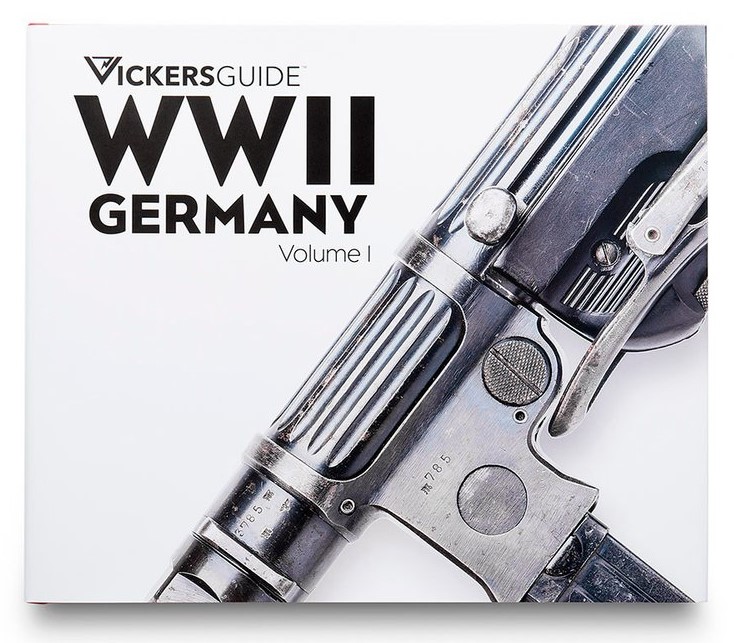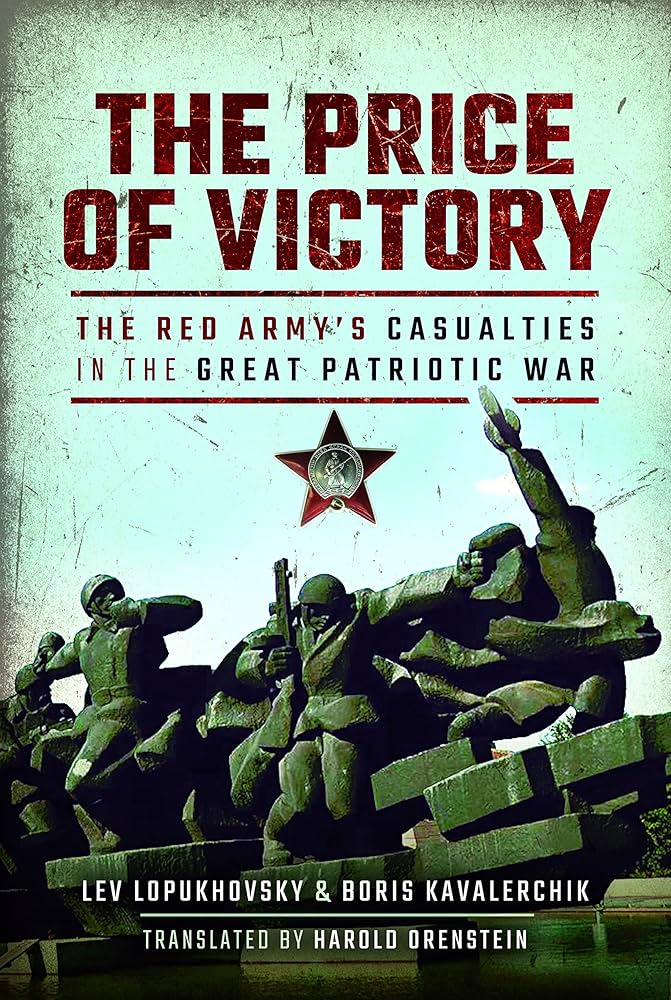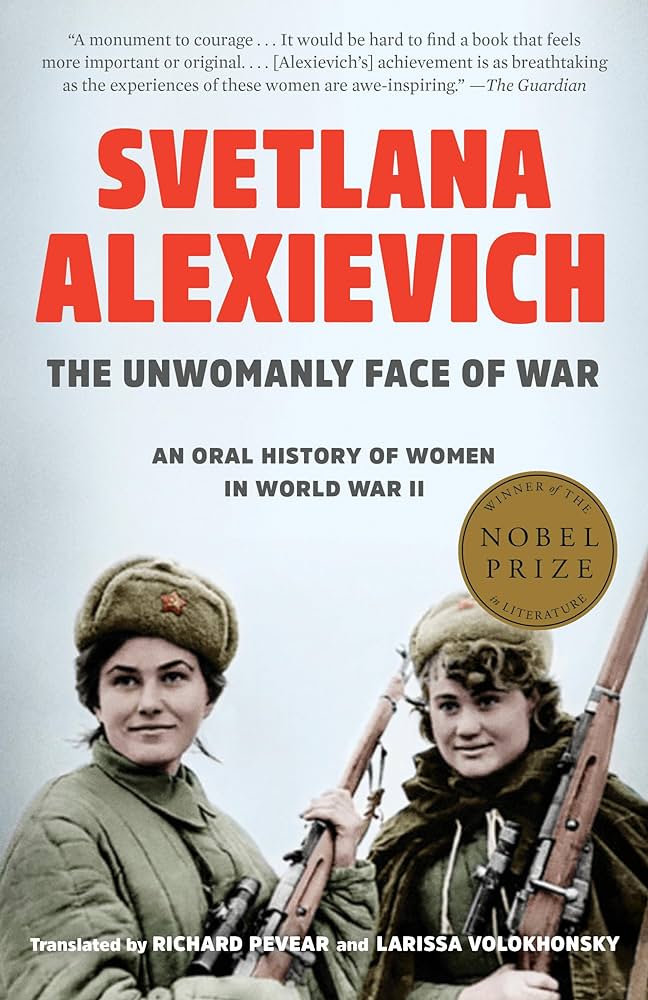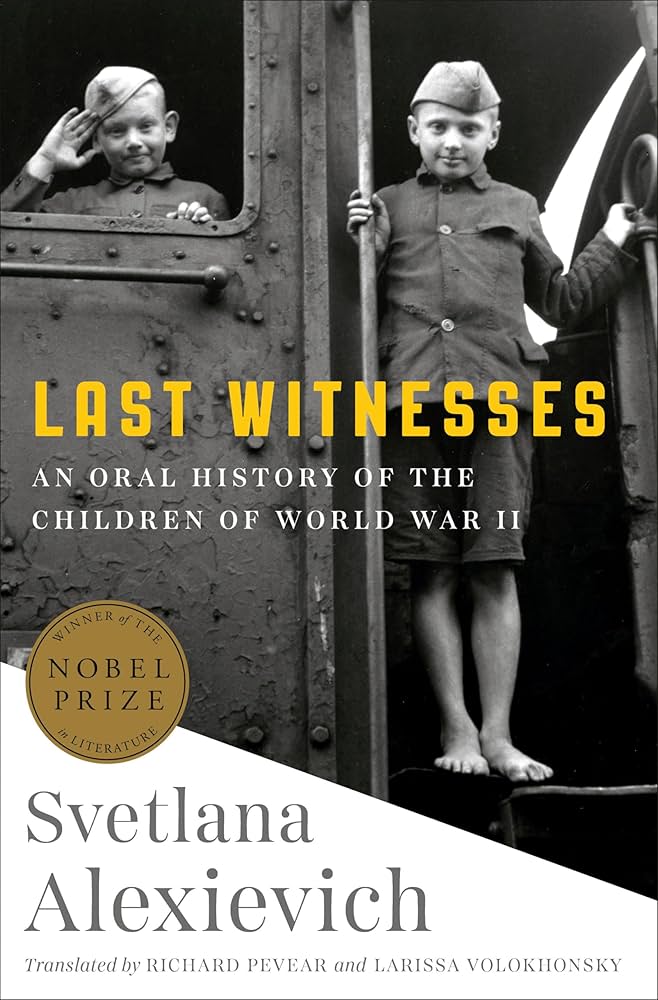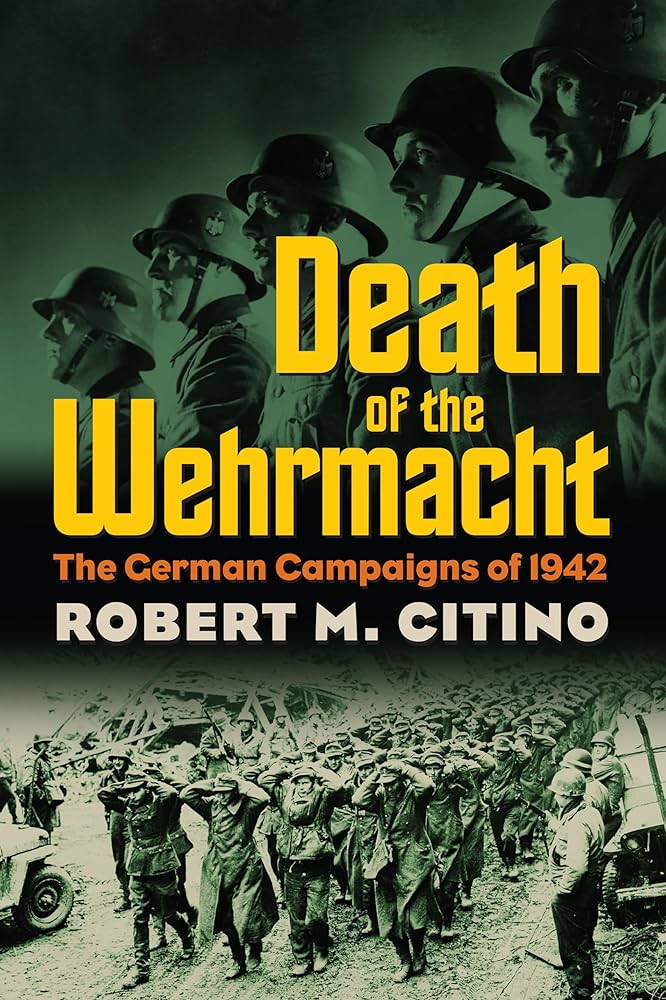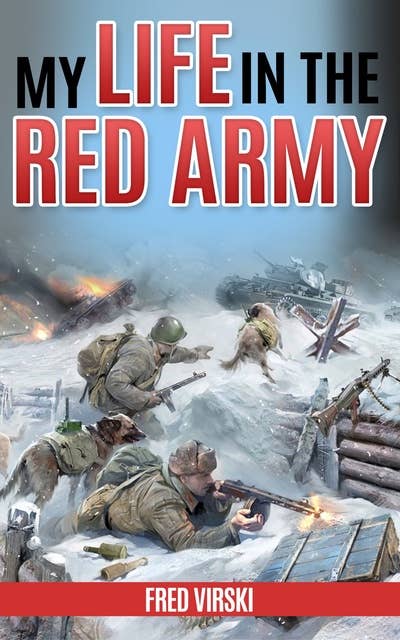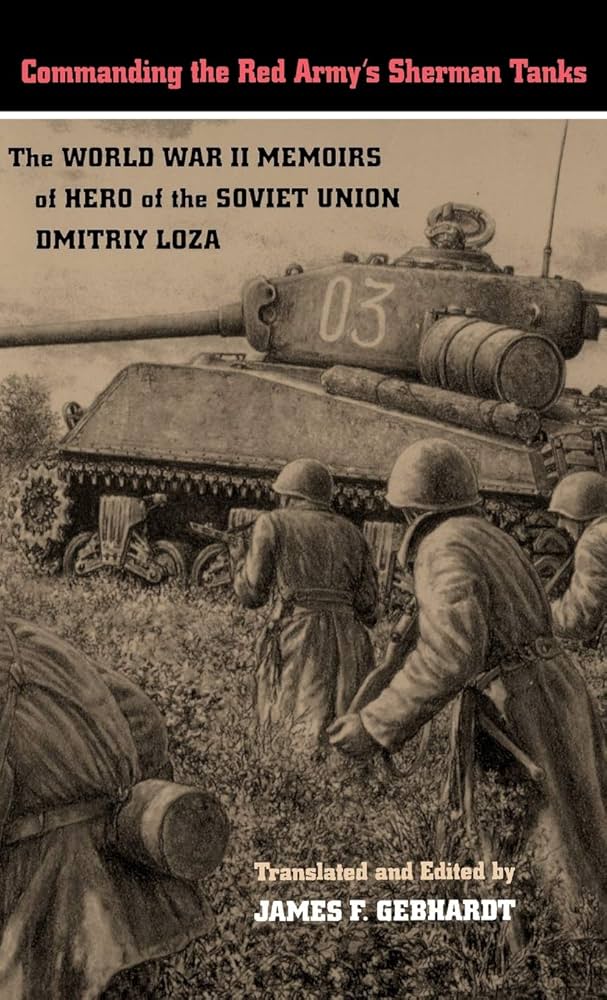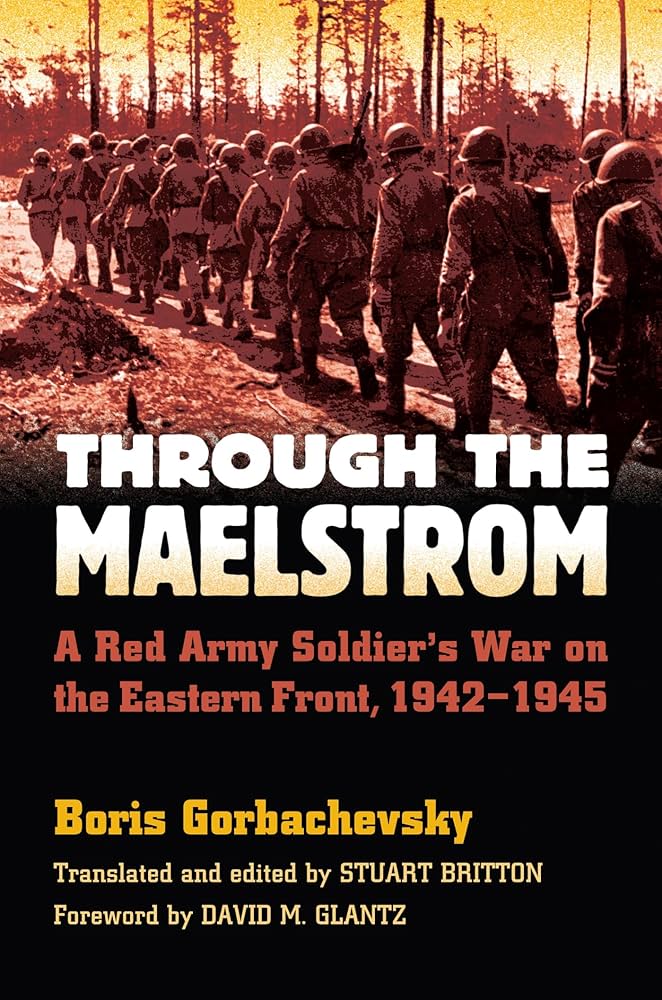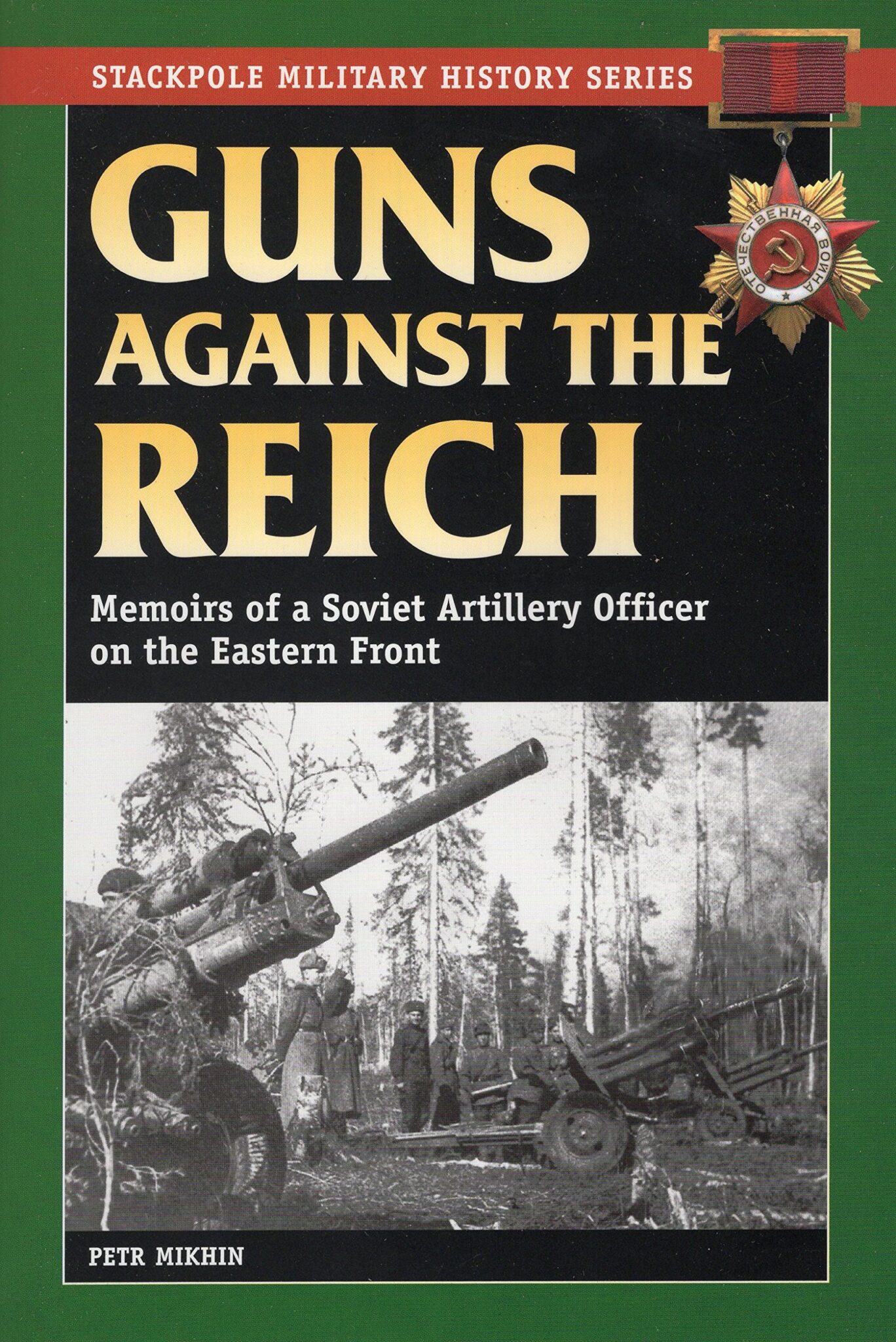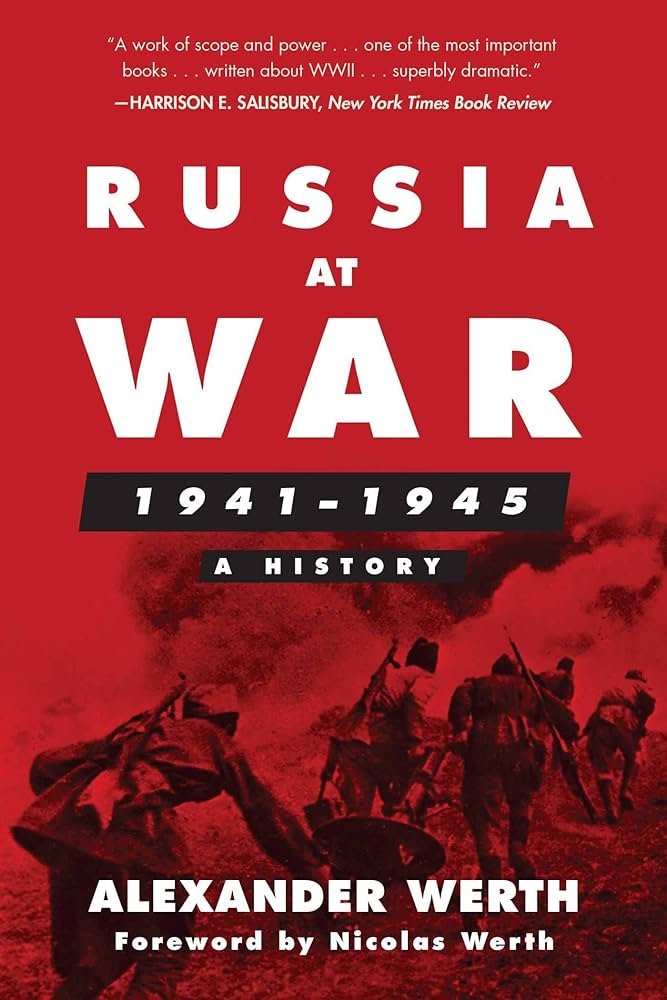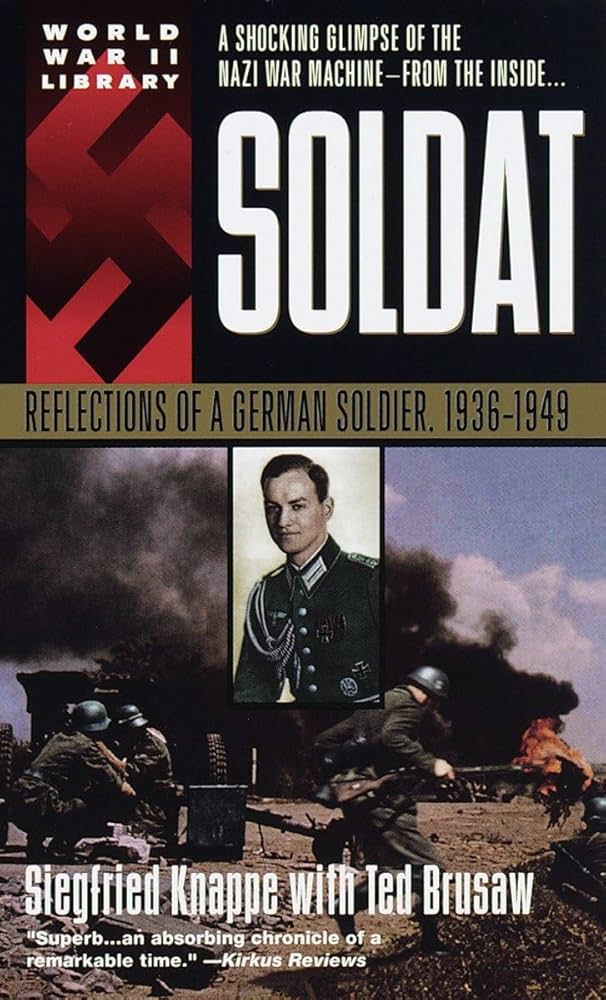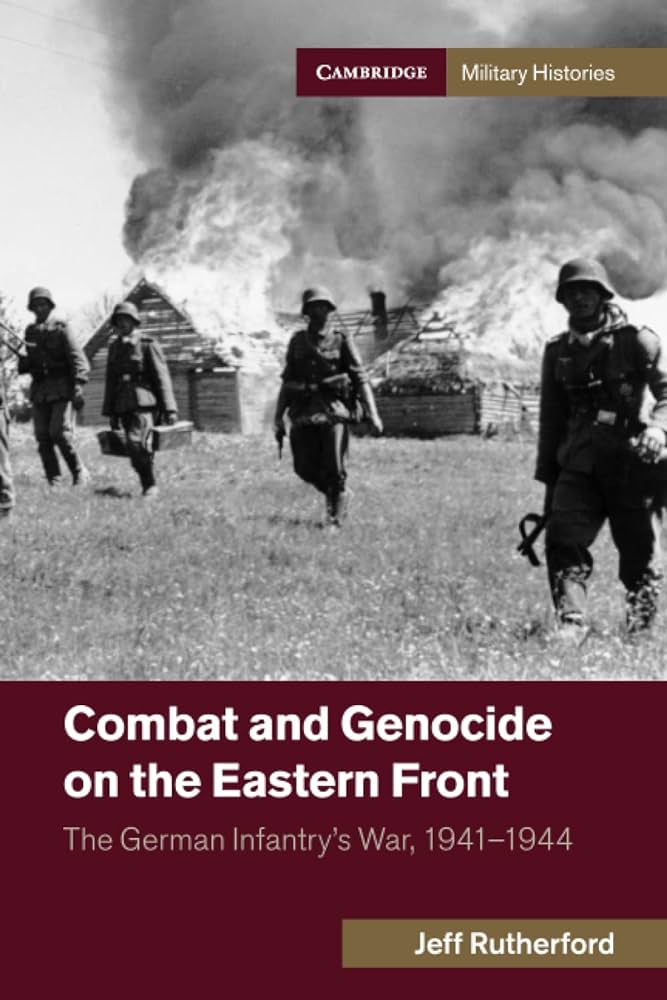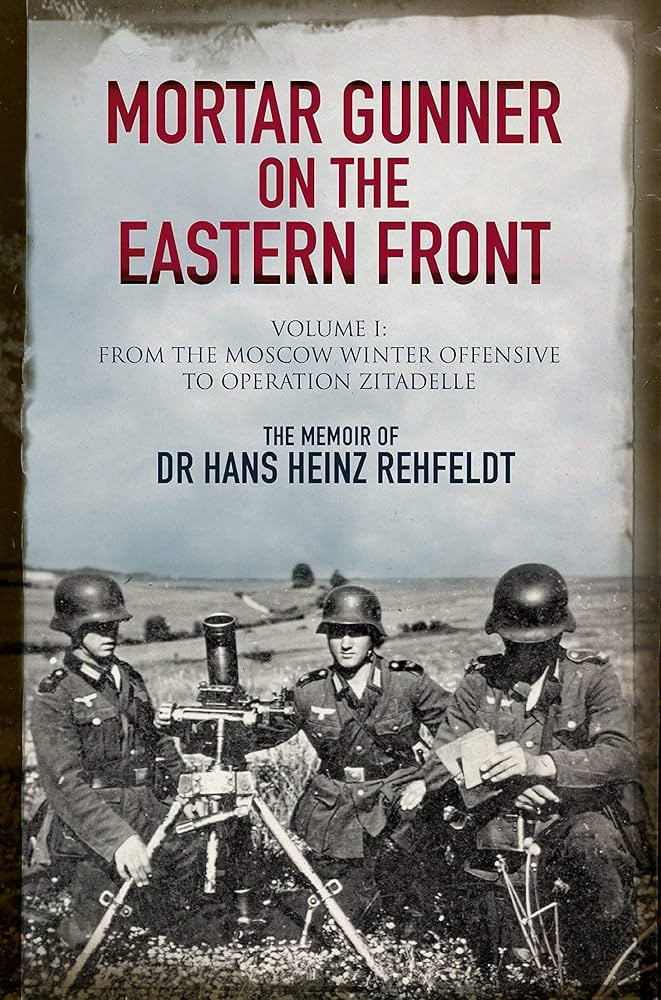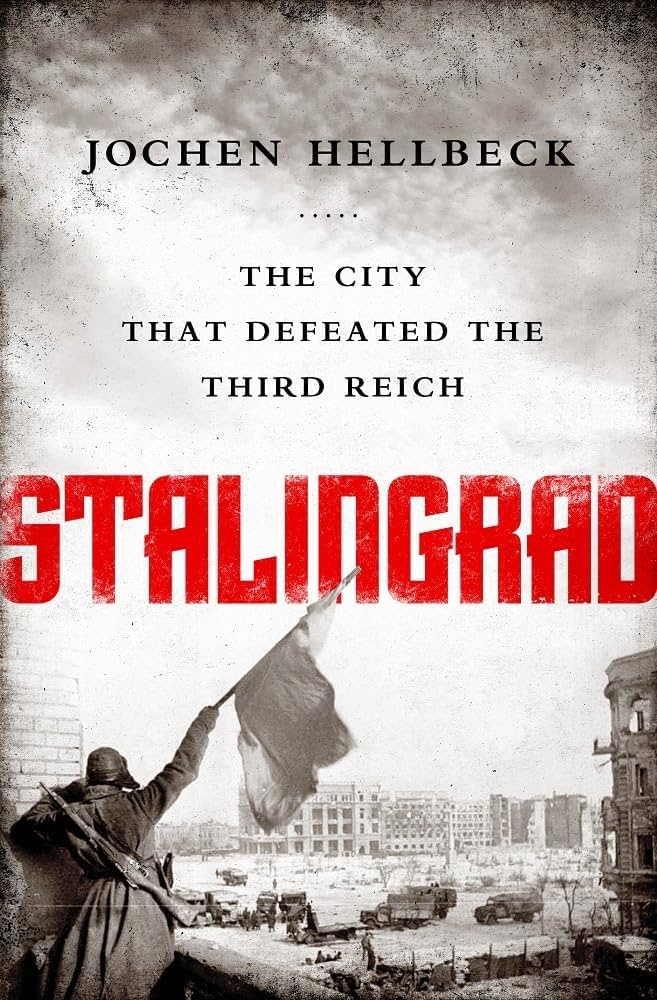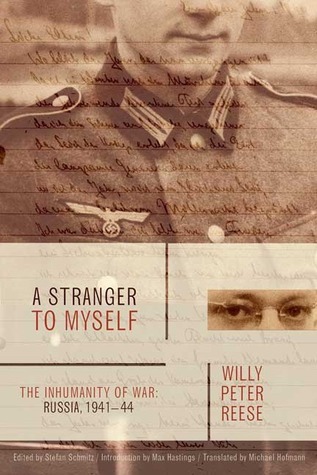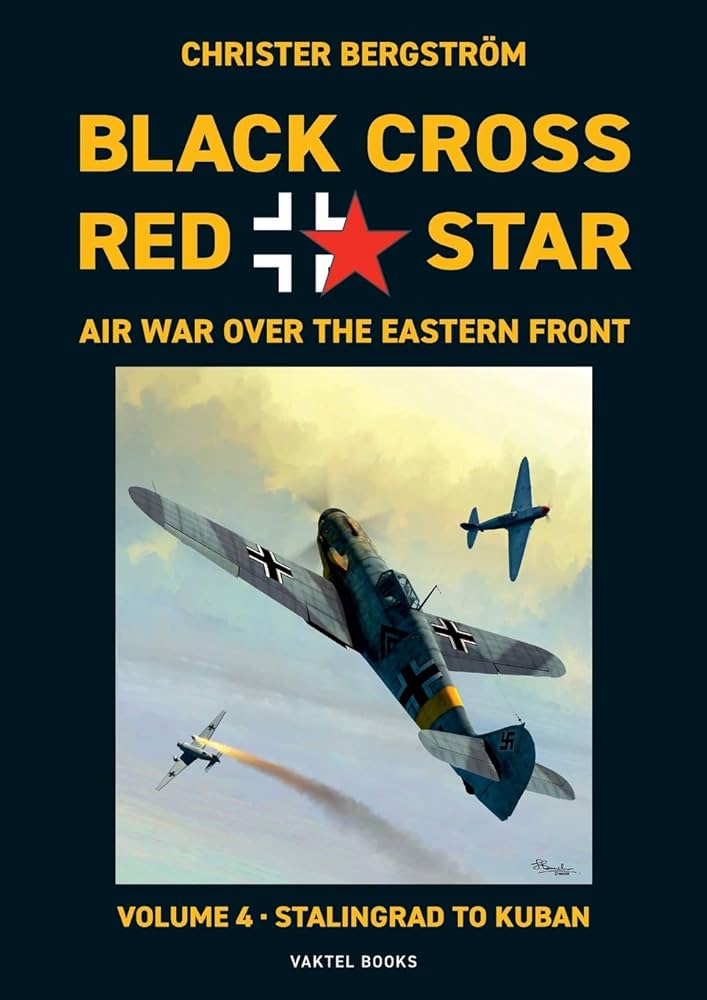Books To Read
By Various Club Members
To understand the Eastern Front during World War II, reading is an absolute must. Below, we’ve curated a list of highly recommended and well-reviewed books that provide comprehensive insights into the Eastern Front from both Soviet and German perspectives.
Before You Read
Not all books are created equal, here we compiled some of the better historical works on the Eastern Front of WWII. We recommend starting with some of the basic introductory books before diving into the more “heavy weight” scholars. Some of the top regarded scholars featured here are David Glantz, Johnathon House, Timothy Synder, David Stahel, Stephen Fritz, Pritt Buttar, and Robert Citino. Typically if you see any book with one of those names on it, read it. There are many others not included, otherwise this article would have run on indefinitely.
Some of these books are operational and strategy focused, others the memoirs of individual men, some on specific battles, and lastly on equipment, uniforms, and small arms. If you are new to the subject start with the simple entries like Russia’s War, The Myth of The Eastern Front, Russia at War, or A Writer at War. Otherwise, dive straight into the David Glantz catalogue of options. Many of the books listed here dispel common myths associated with the Eastern Front on both sides, pretreated by popular culture and older books with outdated information.
Please be aware that the war in the East was one of extreme brutality and annihilation, many of these books cover the crimes against humanity perpetrated by the Soviet Union and Nazi Germany. Millions were murdered at the hands of these regimes, and it is essential to study these events to better understand the soldiers who fought and the countless individuals affected by it. Viewer discretion is advised.
Russia's War
Russia’s War provides a comprehensive overview of the Soviet war effort, beginning with the catastrophic surprise of Operation Barbarossa in 1941 and culminating in the Red Army’s triumphant march into Berlin in 1945. Overy meticulously examines the military, political, and social aspects of the conflict, offering readers a vivid portrait of a nation fighting for its very survival.
Overy conveys the immense human cost of the war. He does not shy away from describing the harsh realities faced by Soviet soldiers and civilians alike, from the brutal winter battles to the devastating sieges of Leningrad and Stalingrad. Overy also delves into the psychological and emotional toll the war took on those who lived through it, providing a poignant reminder of the suffering endured by millions.
Russia’s War is more than just a military history; it explores the ideological underpinnings of the conflict and the social upheavals that accompanied the war. Overy discusses how the Soviet system, with its centralized control and ideological rigidity, was both a hindrance and a source of strength in the war effort. He also touches on the grim realities of life under Stalin, from forced labor camps to mass deportations. This is a great starter book for those who haven’t read much on the war from the Soviet point of view. We highly recommend you read this before getting into more in depth scholars like David Glantz.
Russia’s War provides a comprehensive overview of the Soviet war effort, beginning with the catastrophic surprise of Operation Barbarossa in 1941 and culminating in the Red Army’s triumphant march into Berlin in 1945. Overy discusses how the Soviet system, with its centralized control and ideological rigidity, was both a hindrance and a source of strength in the war effort. He also touches on the grim realities of life under Stalin, from forced labor camps to mass deportations. This is a great starter book for those who haven’t read much on the war from the Soviet point of view. We highly recommend you read this before getting into more in depth scholars like David Glantz.
Bloodlands
Bloodlands is an absolute must read for both Soviet and German reenactors. This books tackles the horrors inflicted on Europe by both the Soviets under Stalin and the Nazis under Hitler. The was in east was devastating for all of those that were caught between it and forced to pick a side, some against their will.
Snyder’s work is an essential contribution to our understanding of the immense human suffering inflicted by the two most brutal regimes of the 20th century. This is an in-depth analysis of the deliberate policies of mass murder enacted by Hitler and Stalin in a geographic area that Snyder chillingly labels as the “bloodlands.” This region, stretching from central Poland to western Russia, saw some of the most horrific atrocities of that era.
The book moves beyond traditional narratives of the war and genocide to focus on the experiences of those who lived—and died—under these twin totalitarian regimes. The result is a chilling chronicle of political and racial violence, including the Soviet-induced famines, Stalin’s Great Terror, the Nazi genocide of Jews, and the war of annihilation waged by Hitler’s forces on the Eastern Front. This book is not an easy read, both due to its subject matter and its unflinching portrayal of the horrors of the time. It is essential reading for anyone seeking to understand the full scope of the tragedy that occurred in Eastern Europe during this period.
Bloodlands is an absolute must read for both Soviet and German reenactors. This books tackles the horrors inflicted on Europe by both the Soviets under Stalin and the Nazis under Hitler. The war in east was devastating for all of those that were caught between it and forced to pick a side, some against their will. The result was a chilling chronicle of political and racial violence, including the Soviet-induced famines, Stalin’s Great Terror, the Nazi genocide of Jews, and the war of annihilation waged by Hitler’s forces on the Eastern Front. This book is not an easy read, both due to its subject matter and its unflinching portrayal of the horrors of the time. It is essential reading for anyone seeking to understand the full scope of the tragedy that occurred in Eastern Europe during this period.
The Myth of The Eastern Front
Smelser and Davies explore the origins and development of what they term the “myth of the clean Wehrmacht.” This myth, perpetuated largely by post-war German generals and their memoirs, paints the German military as an apolitical force that fought a “clean” war against the Soviet Union, distinct from the atrocities committed by the SS and the Nazi leadership. The authors trace how these narratives were adopted then disseminated in the United States, becoming apart of popular culture through books, movies, war games, and even academic circles.
The book also explores the fascination with the German military’s tactical and operational prowess, which has contributed to the romanticization of the Eastern Front. The authors critique the way this fascination often overshadows the brutality and ideological nature of the war, including the systematic genocide and war crimes committed by German forces. Note that it has a section on reenactors in it that is a bit over exaggerated in some cases based on our experience in the reenacting hobby.
This a must-read for anyone interested in understanding how history is shaped by cultural and political forces. A great starter book for those who are going into the subject with little previous knowledge. As well as those who know much about the conflict and want to learn about its representation here in the United States.
Smelser and Davies explore the origins and development of what they term the “myth of the clean Wehrmacht.” This myth was perpetuated largely by post-war German generals and their memoirs. The book explores the fascination with the German military’s tactical and operational prowess, which contributed to the romanticization of the Eastern Front.
Note it does have a section that talks about reenactors that is a bit over exaggerated in some cases based on our experience in the reenacting hobby. A great overall read on the representation of the Eastern Front here in the United States.
When Titans Clashed
This seminal work provides a comprehensive overview of the Eastern Front, offering valuable insights into how the Red Army was able to turn the tide of war and ultimately secure victory over the Wehrmacht. Glantz and House are both esteemed military historians. They draw on a wealth of previously inaccessible Soviet and German archival material to present a balanced and detailed narrative of the conflict. When Titans Clashed is notable for its focus on the operational and strategic aspects of the war, moving beyond the well-trodden stories of individual battles to explore the broader military dynamics at play.
One of the main focuses of the book is the Red Army’s transformation over the course of the war. Starting from how the Soviet military, initially caught off guard by the speed and ferocity of the German invasion in 1941, was able to recover, adapt, and eventually outmaneuver the Wehrmacht. The authors highlight the importance of Soviet industrial capacity, strategic depth, and the relentless determination of the Soviet leadership and people in achieving victory.
When Titans Clashed also challenges some common misconceptions about the Eastern Front. Glantz and House effectively debunk the myth of the Wehrmacht’s invincibility, demonstrating how German forces were often overstretched, under-supplied, and hampered by strategic miscalculations. We cannot recommend this book more, as a follow up to the introduction books in this article.
When Titans Clashed also challenges some common misconceptions about the Eastern Front. Glantz and House effectively debunk the myth of the Wehrmacht’s invincibility, demonstrating how German forces were often overstretched, under-supplied, and hampered by strategic miscalculations. Starting from how the Soviet military, initially caught off guard by the speed and ferocity of the German invasion in 1941, was able to recover, adapt, and eventually outmaneuver the Wehrmacht. We cannot recommend this book more, as a follow up to the introduction books in this article.
Colussus Reborn
Colossus Reborn, offers a meticulously researched and highly detailed account of the Soviet Union’s military transformation during the critical early years of World War II. As one of the leading experts on the Eastern Front, Glantz provides an in-depth exploration of how the Red Army, despite initial catastrophic losses, managed to rebuild and adapt, becoming a formidable force capable of taking on and eventually overcoming the might of Nazi Germany.
Glantz’s use of newly available Soviet archival materials at the time, which allow him to present a more nuanced and accurate picture of the Red Army’s development. He provides a wealth of statistical data, operational details, and firsthand accounts that bring the realities of the Soviet war effort to life.
He does not shy away from discussing the harsh realities faced by Soviet soldiers, including the brutal conditions, the heavy casualties, and the often draconian measures employed by Soviet authorities to maintain discipline and morale. He offers a balanced view that acknowledges both the remarkable achievements of the Red Army and the severe costs borne by its soldiers and the Soviet population. This is an essential read for anyone seeking to understand the Eastern Front of World War II.
Colossus Reborn, offers a meticulously researched and highly detailed account of the Soviet Union’s military transformation during the critical early years of World War II. He does not shy away from discussing the harsh realities faced by Soviet soldiers, including the brutal conditions and the heavy casualties.
Glantz’s use of newly available Soviet archival materials at the time, which allow him to present a more nuanced and accurate picture of the Red Army’s development. He offers a balanced view that acknowledges both the remarkable achievements of the Red Army and the severe costs borne by its soldiers and the Soviet population. This is an essential read for anyone seeking to understand the Eastern Front of World War II.
Glantz & House Stalingrad Series
The Stalingrad series by David Glantz and Jonathan House, which includes three volumes, To the Gates of Stalingrad, Armageddon in Stalingrad, and Endgame at Stalingrad, is an exhaustive and authoritative exploration of one of the most pivotal and brutal battles of World War II. These volumes provide a detailed and comprehensive analysis of the Battle of Stalingrad, offering insights into the operational, strategic, and human aspects of the conflict that changed the course of the war on the Eastern Front.
There is also a one book synopsis simply called Stalingrad which combines content from all three volumes. Even in a condensed format it still remains balanced and informative. Series like these are what makes Glantz the premier soviet battle historian in the west. His content is second to none in the field.
This is a monumental work of scholarship that stands as one of the most comprehensive accounts of the Battle of Stalingrad. The authors’ research, use of primary sources, and balanced perspective make these volumes indispensable for anyone seeking to understand this pivotal battle from the eastern front. These books are the ultimate western source on the battle of Stalingrad. Everything you want to know about the battle are in these books, we cannot recommended them enough.
The Stalingrad series by David Glantz and Jonathan House, which includes three volumes, To the Gates of Stalingrad, Armageddon in Stalingrad, and Endgame at Stalingrad, is an exhaustive and authoritative exploration of one of the most pivotal and brutal battles of World War II. Series like these are what makes Glantz the premier soviet battle historian in the west. This is a monumental work of scholarship that stands as one of the most comprehensive accounts of the battle of Stalingrad. Everything you want to know about the battle are in these books, we cannot recommended them enough.
Red Storm Over The Balkans
Known for his deep expertise on the Eastern Front, Glantz sheds light on the Soviet attempt to invade Romania in the spring of 1944, a campaign that ended in unexpected failure for the Red Army. This work stands out as a crucial contribution to the understanding of Soviet military operations and the broader strategic dynamics of the war in Eastern Europe. We portrayed these events for our 1944 event, Romanian Spring.
Glantz begins by setting the strategic context for the Soviet campaign against Romania. By early 1944, the Red Army was on the offensive, having pushed back German and Axis forces across much of Eastern Europe. He provides a detailed breakdown of the planning and execution of the Soviet offensive, known as the Second Jassy-Kishinev Offensive. Glantz examines the deployment of Soviet forces, their initial advances, and the challenges they faced in the face of strong German and Romanian defenses.
While the Soviet failure in Romania did not change the overall course of the war, Glantz argues that it had significant implications for the Red Army and the broader Allied strategy. The defeat forced the Soviet command to reevaluate its operational planning and approach to future offensives. It also demonstrated the continued resilience and effectiveness of the German military, even in the face of overwhelming odds.
Known for his deep expertise on the Eastern Front, Glantz sheds light on the Soviet attempt to invade Romania in the spring of 1944, a campaign that ended in unexpected failure for the Red Army. We portrayed these events for our 1944 event, Romanian Spring. While the Soviet failure in Romania did not change the overall course of the war, Glantz argues that it had significant implications for the Red Army and the broader Allied strategy. It demonstrated the continued resilience and effectiveness of the German military, even in the face of overwhelming odds.
Barbarossa Derailed Vol. I-IV
In this four book series, Glantz meticulously describes the strategic objectives of both the German Army Group Center and the Soviet defenders. The Germans aimed to encircle and destroy the Soviet forces in the Smolensk region, thereby clearing the way for a direct advance on Moscow. The battle for Smolensk, however, marked a turning point where the Soviet resistance stiffened, and the rapid German advance began to falter.
Glantz’s analysis reveals the complexity of the battle, highlighting the tenacity and adaptability of the Soviet forces, who managed to delay and disrupt the German offensive despite suffering heavy casualties. He explores the role of Soviet counterattacks, the logistical challenges faced by the Germans, and the impact of terrain and weather on the outcome of the battle. The use of maps, unit movements, and firsthand accounts adds depth to the narrative, helping readers to visualize the fluid and chaotic nature of the conflict.
Glantz also examines the impact of the battle on the broader Eastern Front, including the shifting balance of power between the German and Soviet forces. The failure to achieve a quick victory at Smolensk exposed the vulnerabilities of the German military, setting the stage for the protracted and attritional warfare that would come to characterize the Eastern Front. For those seeking to deepen their knowledge of the Eastern Front and the critical events that shaped the outcome of World War II, Barbarossa Derailed is a must-read.
In this four book series, Glantz meticulously describes the strategic objectives of both the German Army Group Center and the Soviet defenders. Glantz’s analysis reveals the complexity of the battle, highlighting the tenacity and adaptability of the Soviet forces, who managed to delay and disrupt the German offensive despite suffering heavy casualties.
The failure to achieve a quick victory at Smolensk exposed the vulnerabilities of the German military, setting the stage for the protracted and attritional warfare that would come to characterize the Eastern Front. This is a must read for all things early war in the east.
Zhukov's Greatest Defeat
Glantz provides a detailed and compelling analysis of one of the lesser-known Soviet military operations during World War II. This book challenges the popular narrative that emphasizes Soviet successes and highlights the complexities and harsh realities of warfare on the Eastern Front. Operation Mars, launched in November 1942, was a major Soviet offensive directed against the German Ninth Army in the Rzhev salient, west of Moscow.
The book highlights the difficulties of launching large-scale offensives in the rugged terrain of the Rzhev salient, compounded by logistical issues, communication breakdowns, and stiff German resistance. The narrative reveals the heavy losses suffered by the Red Army, with entire divisions being decimated in the face of well-prepared German positions. Also detailed is the ambitious goals of the operation, the deployment of Soviet forces, and the coordination with other offensives, such as the successful Operation Uranus at Stalingrad.
Glantz’s analysis exposes the flaws in Soviet planning, including overestimation of their own capabilities and underestimation of German strength. He also discusses the role of weather, terrain, and German tactical proficiency in blunting the Soviet advance. This is an excellent read on the darkest days of the Red Army and how it shaped the rest of the war.
This book challenges the popular narrative that emphasizes Soviet successes and highlights the complexities and harsh realities of warfare on the Eastern Front. Glantz highlights the difficulties of launching large-scale offensives in the rugged terrain of the Rzhev salient, compounded by logistical issues, communication breakdowns, and stiff German resistance.
The narrative reveals the heavy losses suffered by the Red Army, with entire divisions being decimated in the face of well-prepared German positions. This is an excellent read on the darkest days of the Red Army and how it shaped the rest of the war.
Glantz & House Battle of Kursk
Glantz and House begin by setting the stage for the Battle of Kursk, explaining the strategic context that led to this colossal clash. They detail the preparations on both sides, including the extensive defensive fortifications constructed by the Soviets and the massive buildup of German armor and infantry, underscoring the scale and importance of the battle to both Hitler and Stalin.
Glantz and House do not merely recount the events but delve into the strategic and tactical decisions made by the commanders on both sides. They analyze the German combine arms tactics and the failure to adapt to the fortified Soviet defenses. On the other hand, they commend the Soviets for their effective use of intelligence, the depth of their defensive preparations, and the skillful deployment of reserves that blunted the German offensive and enabled a powerful counteroffensive.
It is argued that the Battle of Kursk was a decisive turning point in World War II. They demonstrate how the failure of Operation Citadel depleted Germany’s armored reserves, weakened its strategic position, and shifted the initiative permanently to the Soviet Union. The book emphasizes the significance of Kursk in the broader context of the Eastern Front, marking the transition from defensive to offensive operations for the Red Army, leading to subsequent Soviet victories in the defeat of Nazi Germany.
It is argued that the Battle of Kursk was a decisive turning point in World War II. Glantz and House demonstrate how the failure of Operation Citadel depleted Germany’s armored reserves, weakened its strategic position, and shifted the initiative permanently to the Soviet Union. The book emphasizes the significance of Kursk in the broader context of the Eastern Front, marking the transition from defensive to offensive operations for the Red Army, leading to subsequent Soviet victories in the defeat of Nazi Germany.
A Writer At War
Vasily Grossman, renowned for his later work as a novelist, was a war correspondent for the Soviet military newspaper Красная Звезда (Red Star). His reports, filled with empathy and keen observation, captured the realities of war with brutal honesty. In A Writer at War, Grossman’s notebooks, articles, and personal writings, providing a narrative that spans from the German invasion of the Soviet Union in 1941 to the fall of Berlin in 1945.
Grossman’s writings bring to life the experiences of soldiers and civilians alike, depicting the devastation of cities, the horrors of the Holocaust, and the fierce determination of the Soviet people to resist the Nazi onslaught. Unlike the propaganda-laden reports often associated with Soviet journalism, Grossman’s accounts are marked by a candid acknowledgment of the hardships faced by the Red Army and the suffering of the Soviet people. He does not shy away from depicting the brutality of war, including the harsh treatment of civilians, the psychological toll on soldiers, and the grim reality of death and destruction.
Grossman’s writings also offer a unique perspective on the Holocaust, as he was one of the first journalists to document the liberation of Nazi extermination camps. His reports on the atrocities committed against Jews and other minorities provide a powerful testament to the horrors of the Holocaust and the moral imperative to remember and bear witness to these crimes against humanity.
Vasily Grossman, renowned for his later work as a novelist, was a war correspondent for the Soviet military newspaper Красная Звезда (Red Star). His reports, filled with empathy and keen observation, captured the realities of war with brutal honesty. In A Writer at War, Grossman’s notebooks, articles, and personal writings, providing a narrative that spans from the German invasion of the Soviet Union in 1941 to the fall of Berlin in 1945. Grossman’s writings bring to life the experiences of soldiers and civilians alike, depicting the devastation of cities, the horrors of the Holocaust, and the fierce determination of the Soviet people to resist the Nazi onslaught.
Island of Fire
Jason D. Mark covers gripping and detailed account of one of the most intense and brutal engagements within the Battle of Stalingrad. Focusing on the struggle for the Barrikady Gun Factory, a key industrial complex in the northern part of the city, Mark provides a day-by-day, and often hour-by-hour, recounting of the savage fighting that epitomized the ferocity of Stalingrad. The Stalingrad Factory events were based off of this battle, and this book was used as a resource for planning that event.
The Battle of Stalingrad is widely known for its sheer scale and the devastating human cost. Within this larger narrative, the fight for the Barrikady Gun Factory stands out as a microcosm of the larger battle’s ferocity and strategic importance. Mark meticulously reconstructs this fight, describing how Soviet and German forces clashed amidst the ruins, each determined to control this critical industrial site. The factory itself became a fortress, with both sides pouring men and resources into a bitter struggle that saw no quarter given.
The use of firsthand accounts, from letters, diaries, and official reports, gives life to the narrative and provides a human perspective on the cold statistics of war. By holding the line at places like the Barrikady Gun Factory, the Soviet forces were able to wear down the German Sixth Army, setting the stage for the encirclement and eventual surrender of the German forces.
Jason D. Mark covers gripping and detailed account of one of the most intense and brutal engagements within the Battle of Stalingrad. Focusing on the struggle for the Barrikady Gun Factory, a key industrial complex in the northern part of the city, Mark provides a day-by-day, and often hour-by-hour, recounting of the savage fighting that epitomized the ferocity of Stalingrad. The Stalingrad Factory events were based off of this battle, and this book was used as a resource for planning that event.
Stalingrad City On Fire
Alexey Isaev goes beyond the familiar narrative of the siege, offering fresh insights and perspectives based on newly available Soviet and German archival sources. Isaev’s analysis covers the entire scope of the battle, from the initial German advance and the fierce Soviet resistance to the encirclement of the German Sixth Army and its eventual surrender.
He carefully explains the decisions made by both Soviet and German high commands, providing readers with a clear understanding of the military strategies that shaped the course of the battle. Isaev’s attention to detail is evident in his descriptions of the various phases of the battle, the composition of the forces involved, and the challenges faced by commanders on both sides.
Through firsthand accounts, diaries, and letters from soldiers and civilians, Stalingrad: City on Fire captures the immense suffering and resilience of those caught in the crossfire. Isaev also sheds light on the experiences of civilians who endured the siege, offering poignant insights into their daily struggles for survival amidst bombings, starvation, and the ever-present threat of death. the book challenges conventional narratives and provide new interpretations of the battle. Isaev also addresses some of the myths and misconceptions surrounding Stalingrad, such as the supposed inferiority of Soviet forces or the inevitability of German defeat.
Through firsthand accounts, diaries, and letters from soldiers and civilians, Stalingrad: City on Fire captures the immense suffering and resilience of those caught in the crossfire. Isaev also sheds light on the experiences of civilians who endured the siege, offering poignant insights into their daily struggles for survival amidst bombings, starvation, and the ever-present threat of death.
The book challenges conventional narratives and provide new interpretations of the battle. Isaev also addresses some of the myths and misconceptions surrounding Stalingrad, such as the supposed inferiority of Soviet forces or the inevitability of German defeat.
The Lighthouse of Stalingrad
The Lighthouse of Stalingrad by Iain MacGregor zeroes in on the battle’s most famous and symbolic landmarks—the ruined building known as “Pavlov’s House”—which became a focal point of resistance during the brutal fight for the city of Stalingrad. MacGregor’s work brings to life the harrowing struggle faced by Soviet soldiers as they held out against relentless German assaults, providing a fresh perspective on the battle that has come to symbolize the Soviet Union’s resolve.
MacGregor reconstructs the events surrounding the defense of Pavlov’s House, drawing on firsthand accounts, diaries, and official reports to provide a vivid portrayal of the soldiers’ experiences. He delves into the strategic significance of the city, explaining why both the Soviet and German high commands were so determined to control it.
While the book primarily focuses on the Soviet perspective, MacGregor does not neglect the experiences of the German soldiers who fought in Stalingrad. He provides insights into the motivations and challenges faced by the German forces, offering a nuanced view of the conflict that recognizes the complexity of war and the humanity of those on both sides. If you are looking for another in depth book on a specific section of Stalingrad like Island of Fire, this is a solid choice.
The Lighthouse of Stalingrad by Iain MacGregor zeroes in on the battle’s most famous and symbolic landmarks—the ruined building known as “Pavlov’s House”—which became a focal point of resistance during the brutal fight for the city of Stalingrad. MacGregor reconstructs the events surrounding the defense of Pavlov’s House, drawing on firsthand accounts, diaries, and official reports to provide a vivid portrayal of the soldiers’ experiences. If you are looking for another in depth book on a specific section of Stalingrad like Island of Fire, this is a solid choice.
Stahel Operation Barbarossa
David Stahel’s Operation Barbarossa and Germany’s Defeat in the East offers a detailed and thought-provoking examination of one of World War II’s most consequential military campaigns. The book spans the period from the launch of Operation Barbarossa in June 1941 to the critical turning points in the early years of the Eastern Front. Stahel explores the complexities of the German campaign, providing a nuanced analysis of why the Wehrmacht, despite initial successes, was unable to secure a decisive victory against the Soviet Union.
The book challenges traditional narratives by highlighting not only the Soviet counterattacks but also German operational overreach, strategic errors, and logistical issues. Stahel argues that these factors were crucial in undermining the German offensive, providing a more comprehensive view of why the campaign faltered. It also is very technically dense, the depth of analysis might be overwhelming for those seeking a more narrative-driven account of the campaign.
By examining the operational and strategic elements of the German invasion, Stahel offers fresh insights into why the campaign, despite early successes, ultimately failed. This book is highly recommended for historians, military enthusiasts, and readers interested in a detailed understanding of the Eastern Front. It stands out for its rigorous analysis and contribution to the ongoing scholarly discussion of the war’s most complex theater.
By examining the operational and strategic elements of the German invasion, Stahel offers fresh insights into why the campaign, despite early successes, ultimately failed. This book is highly recommended for historians, military enthusiasts, and readers interested in a detailed understanding of the Eastern Front. It stands out for its rigorous analysis and contribution to the ongoing scholarly discussion of the war’s most complex theater.
Retreat From Moscow
Stahel’s books excels in its detailed examination of military operations. He meticulously explores the German retreat, analyzing the tactical decisions, logistical challenges, and the harsh winter conditions that contributed to the Wehrmacht’s difficulties. His detailed accounts offer a clear understanding of how these factors combined to hamper German progress and contribute to their eventual retreat.
This book provides a fresh perspective on the German retreat, emphasizing not just the Soviet counteroffensive but also the internal issues within the German military. Stahel highlights operational overreach, logistical failures, and the underestimation of Soviet resilience, offering a more nuanced view of why the Germans were unable to sustain their offensive. Stahel explores how this retreat impacted German military strategy and how it marked a shift in the balance of power on the Eastern Front, setting the stage for future Soviet offensives.
Retreat from Moscow by David Stahel is a significant contribution to the study of World War II’s Eastern Front. Stahel’s detailed analysis of the German retreat provides fresh insights into the operational and strategic challenges faced by the Wehrmacht. Once again this book is dense with technical detail and recommended for readers who already have read starter books on the war in the east.
This book provides a fresh perspective on the German retreat, emphasizing not just the Soviet counteroffensive but also the internal issues within the German military. Stahel highlights operational overreach, logistical failures, and the underestimation of Soviet resilience, offering a more nuanced view of why the Germans were unable to sustain their offensive. Stahel explores how this retreat impacted German military strategy and how it marked a shift in the balance of power on the Eastern Front, setting the stage for future Soviet offensives.
Frontsoldaten
Frontsoldaten: The German Soldier in World War II by Stephen G. Fritz offers a compelling and insightful look into the experiences of the average German soldier. Rather than focusing solely on battles or high command decisions, Frontsoldaten delves into the psychological and social aspects of the soldiers’ lives.
Fritz challenges the monolithic portrayal of the German soldier, demonstrating the complexity and diversity of their experiences. He illustrates how many were driven by a sense of duty, camaraderie, and survival rather than ideological commitment to Nazism. This approach humanizes the soldiers without excusing the atrocities committed by others. The book effectively balances empathy with critical analysis, showing how ordinary men could become complicit in extraordinary crimes.
Fritz also examines the impact of propaganda and the totalitarian state on the soldiers’ worldview. He explores how the Nazi regime manipulated patriotism and fear, creating a complex moral landscape for the soldiers. This exploration is particularly relevant in understanding how ideology can shape the actions of individuals and societies. Some readers may find the narrative somewhat fragmented, as it often jumps between different soldiers’ accounts. This is not a book detailing tactical and strategic discussions or a comprehensive big picture narative.
Frontsoldaten: The German Soldier in World War II by Stephen G. Fritz offers a compelling and insightful look into the experiences of the average German soldier. Rather than focusing solely on battles or high command decisions, Frontsoldaten delves into the psychological and social aspects of the soldiers’ lives. Fritz challenges the monolithic portrayal of the German soldier, demonstrating the complexity and diversity of their experiences.
His approach humanizes the soldiers without excusing the atrocities committed by others. Some readers may find the narrative somewhat fragmented, as it often jumps between different soldiers’ accounts. This is not a book detailing tactical and strategic discussions or a comprehensive big picture narative.
Ostkrieg Hitler's War of Extermination
Fritz sets the stage by delving into the political and ideological roots of the conflict. He examines how Hitler’s vision of Lebensraum (living space) and racial purity drove the Nazi regime to invade the Soviet Union. This invasion, codenamed Operation Barbarossa, was not merely a military campaign but a genocidal war aimed at annihilating entire populations. Fritz expertly weaves together military history with the ideological underpinnings of the war, providing readers with a deep understanding of the motivations behind the Nazi actions.
Fritz does not shy away from describing the brutal realities faced by soldiers and civilians alike. The book vividly portrays the suffering of the Soviet people, the horrors of the Holocaust, and the devastation wrought by the war. Fritz also critically examines the leadership of both Hitler and Stalin, highlighting their strategic blunders and ruthless disregard for human life. The book paints a grim picture of the totalitarian regimes that led millions to their deaths in the name of ideology.
Ostkrieg provides a detailed narrative of the war’s military campaigns, while also exploring the ideological motivations and horrific consequences of Hitler’s campaign of extermination. The book is dense with information, and its focus on both military and ideological aspects requires careful reading. Reader discretion is advised.
Fritz sets the stage by delving into the political and ideological roots of the conflict. He examines how Hitler’s vision of Lebensraum (living space) and racial purity drove the Nazi regime to invade the Soviet Union. This invasion, codenamed Operation Barbarossa, was not merely a military campaign but a genocidal war aimed at annihilating entire populations.
Ostkrieg provides a detailed narrative of the war’s military campaigns, while also exploring the ideological motivations and horrific consequences of Hitler’s campaign of extermination. The book is dense with information, and its focus on both military and ideological aspects requires careful reading. Reader discretion is advised.
Nazi Policy on The Eastern Front
This book offers a detailed exploration of how Nazi ideology manifested in the devastating policies and actions on the Eastern Front, resulting in both total war and genocide. It explores how the Nazi regime viewed the Eastern Front not just as a military campaign, but as an ideological crusade aimed at the complete annihilation of perceived enemies, including Jews, Soviet POWs, and the Slavic population.
This total war mentality, driven by racial and ideological hatred, led to the brutal treatment of civilians and soldiers alike, making the Eastern Front one of the deadliest theaters of World War II. The book delves deeply into the genocidal aspects of Nazi policy, highlighting the systematic efforts to exterminate entire populations. The authors provide detailed accounts of the Einsatzgruppen (mobile killing units) and their role in the mass shootings of Jews and other targeted groups. The book reveals how these genocidal actions were not merely the result of opportunistic violence but were part of a calculated policy of racial extermination orchestrated by the Nazi leadership.
The authors examine how the brutal realities of the Eastern Front, combined with ideological indoctrination, led to an escalation in violence and radical behavior among German soldiers and officers. This radicalization was not limited to SS units but permeated the regular army, challenging the notion of a “clean” Wehrmacht.
Nazi Policy on the Eastern Front explores how the Nazi regime viewed the Eastern Front not just as a military campaign, but as an ideological crusade aimed at the complete annihilation of perceived enemies, including Jews, Soviet POWs, and the Slavic population. The book reveals how these genocidal actions were not merely the result of opportunistic violence but were part of a calculated policy of racial extermination orchestrated by the Nazi leadership. This is not an easy read, discretion is advised.
Centuries Will Not Suffice
Centuries Will Not Suffice explores how different people responded to the Lithuanian Holocaust and the roles that they played. It considers the past history of the perpetrators, collaborators and those who took great risks to save Jews, as well as describing the experiences of many who were caught up in the maelstrom. Unlike the figures at the top of the Nazi hierarchy, the men who were responsible for and collaborated in these killings have been largely forgotten.
At least 196,500, and according to some estimates as many as 254,000 Lithuanian Jews were murdered. The vast majority were slaughtered by the Einsatzgruppen and their local paramilitary auxiliary police and schutzmannschaft helpers in the first months that followed the German invasion.
Despite the overwhelming terror, there were instances of humanity and compassion from both Lithuanians and Germans during this dark period. Anton Schmid assisted Lithuanian Jews in escaping to Belarus, demonstrating remarkable courage. Karl Plagge established a small camp for Jewish workers and their families near his repair workshop, ensuring they were fed as well as the German personnel, and he protected them until the German withdrawal from Lithuania. Jonas Paulavičius risked his own life and the safety of his family by hiding Jews in his farmhouse. This is a difficult read, but an essential addition to the history of the holocaust.
Centuries Will Not Suffice explores how different people responded to the Lithuanian Holocaust and the roles that they played. It considers the past history of the perpetrators, collaborators and those who took great risks to save Jews, as well as describing the experiences of many who were caught up in the maelstrom.
At least 196,500, and according to some estimates as many as 254,000 Lithuanian Jews were murdered. The vast majority were slaughtered by the Einsatzgruppen and their local paramilitary auxiliary police and schutzmannschaft helpers in the first months that followed the German invasion. This is a difficult read, but an essential addition to the history of the holocaust.
Buttar Bagration 1944
Buttar’s writing is clear and accessible, making complex military operations understandable to readers who may not be experts in military history. He balances detailed analysis with engaging narrative, ensuring the book appeals to both casual readers and serious historians. While the book naturally focuses on the Soviet perspective, given the nature of the operation, Buttar also provides insight into the German experience. He critically examines the decisions made by both Soviet and German commanders, offering insights into how these decisions shaped the outcome of the battle.
While the book naturally focuses on the Soviet perspective, given the nature of the operation, Buttar also provides insight into the German experience. He critically examines the decisions made by both Soviet and German commanders, offering insights into how these decisions shaped the outcome of the battle. he book is structured chronologically, starting with the state of the Eastern Front in early 1944, before delving into the operational details of the offensive.
Buttar offers a thorough and engaging account of a pivotal yet often overlooked campaign of World War II. His meticulous research, combined with a compelling narrative style, makes this book an essential read for anyone interested in the Eastern Front and the broader implications of World War II. Similar to Glantz, Buttar is a must read author.
Buttar’s writing is clear and accessible, making complex military operations understandable to readers who may not be experts in military history. While the book naturally focuses on the Soviet perspective, given the nature of the operation, Buttar also provides insight into the German experience. He offers a thorough and engaging account of a pivotal yet often overlooked campaign of World War II. Similar to Glantz, Buttar is a must read author.
Between Giants
Buttar’s work shines a light on the experiences of Latvia, Lithuania, and Estonia, small nations caught between the brutal forces of Nazi Germany and the Soviet Union. The book is organized chronologically, starting from the pre-war period and the Soviet occupation in 1940, moving through the Nazi invasion and occupation from 1941 to 1944, and finally the Soviet reoccupation towards the end of the war. Buttar offers a comprehensive look at the political, military, and social aspects of the Baltic states during this turbulent period.
He examines the motivations and actions of both Nazi Germany and the Soviet Union, as well as the dilemmas faced by the Baltic states, which were often forced to choose between two oppressive regimes. Buttar also explores the complex dynamics of collaboration and resistance within the Baltic countries, highlighting the moral and practical challenges faced by individuals and communities. He discusses how the fate of these small nations was influenced by the strategic interests of the major powers, and how the outcomes of the battles fought in this region had significant impacts on the course of World War II and the post-war order in Eastern Europe.
Between Giants: The Battle for the Baltics in World War II is a meticulously researched and compellingly written account of a crucial and often overlooked theater of the eastern front. It is an essential read for anyone interested in the Eastern Front, and the history of the Baltic states.
Buttar’s work shines a light on the experiences of Latvia, Lithuania, and Estonia, small nations caught between the brutal forces of Nazi Germany and the Soviet Union. He examines the motivations and actions of both Nazi Germany and the Soviet Union, as well as the dilemmas faced by the Baltic states, which were often forced to choose between two oppressive regimes. Buttar offers a comprehensive look at the political, military, and social aspects of the Baltic states during this turbulent period. It is an essential read for anyone interested in the Eastern Front, and the history of the Baltic states.
Meat Grinder
This book, part of Buttar’s extensive works on the Eastern Front, delves into the harrowing struggle that unfolded between the Soviet Red Army and the German Wehrmacht in what became known as the “Rzhev Meat Grinder.” he book is organized into a series of chapters that guide readers through the initial German offensive, the Soviet attempts to recapture the salient, and the eventual German withdrawal. Our 1942 immersion event was based on this engagement.
One of the key strengths of “Meat Grinder” is Buttar’s ability to convey the sheer scale and horror of the battles around Rzhev. He paints a vivid picture of the conditions faced by soldiers on both sides, from the freezing winters to the relentless artillery barrages and close-quarters combat. Buttar does not shy away from the grim realities of war, highlighting the high casualty rates and the immense suffering endured by the troops. This honest portrayal underscores the brutality of the Eastern Front and the tremendous human cost of the battles fought there.
Buttar examines the motivations and constraints faced by military leaders, revealing how a combination of strategic imperatives, logistical challenges, and political pressures shaped the conduct of the campaign. “Meat Grinder” stands as a powerful testament to the human cost of war and a valuable contribution to our understanding of the complexities and horrors of the Eastern Front.
This book, part of Buttar’s extensive works on the Eastern Front, delves into the harrowing struggle that unfolded between the Soviet Red Army and the German Wehrmacht in what became known as the “Rzhev Meat Grinder.” he book is organized into a series of chapters that guide readers through the initial German offensive, the Soviet attempts to recapture the salient, and the eventual German withdrawal.
One of the key strengths of “Meat Grinder” is Buttar’s ability to convey the sheer scale and horror of the battles around Rzhev. He paints a vivid picture of the conditions faced by soldiers on both sides, from the freezing winters to the relentless artillery barrages and close-quarters combat. Our 1942 immersion event was based on this engagement.
Red Road From Stalingrad
Red Road From Stalingrad by Mansur Abdulin is a gripping and deeply personal memoir that provides an authentic view of World War II from the perspective of a Soviet soldier. Abdulin, who served in the Soviet Red Army during some of the most brutal campaigns on the Eastern Front, offers readers an unvarnished account of his experiences from the battlefields of Stalingrad to the final push into Germany.
Abdulin’s writing is straightforward and honest, characterized by a raw authenticity that brings his experiences to life. The memoir is written in a conversational style, which makes it accessible to a wide audience. Despite the often grim and brutal subject matter, Abdulin’s narrative is compelling and filled with a sense of humanity. He provides detailed descriptions of the battlefield, the camaraderie among soldiers, and the emotional and physical toll of war, allowing readers to immerse themselves in the realities of combat.
One of the most striking aspects of Red Road from Stalingrad is Abdulin’s portrayal of the Soviet soldier’s experience. He does not shy away from describing the horrors of war—the fear, the suffering, and the loss. Yet, he also captures moments of courage, resilience, and even humor, showing the complexity of human emotions in wartime. Abdulin’s reflections on the nature of courage, the bonds formed between soldiers, and the impact of war on the human psyche offer profound insights into the soldier’s experience.
Red Road From Stalingrad by Mansur Abdulin is a gripping and deeply personal memoir that provides an authentic view of World War II from the perspective of a Soviet soldier. Abdulin, who served in the Soviet Red Army during some of the most brutal campaigns on the Eastern Front, offers readers an unvarnished account of his experiences from the battlefields of Stalingrad to the final push into Germany.
One of the most striking aspects of Red Road from Stalingrad is Abdulin’s portrayal of the Soviet soldier’s experience. He does not shy away from describing the horrors of war—the fear, the suffering, and the loss. Yet, he also captures moments of courage, resilience, and even humor, showing the complexity of human emotions in wartime.
The Stuff Of Soldiers
The strength of Schechter’s book lies in its focus on the individual experiences within the vast machinery of the Red Army. By highlighting personal stories and material culture, he illuminates how ordinary soldiers navigated the brutality of war, the complexities of loyalty and ideology, and their own psychological and physical endurance. The book’s rich detail paints a vivid picture of the day-to-day realities faced by these men, making the larger historical narrative more accessible and relatable.
While the book’s focus on material culture and personal items adds depth, some readers might find the detailed descriptions of artifacts less engaging if they are more interested in broader military strategy or political history. Nevertheless, for those intrigued by the human side of history, Schechter’s work is both enlightening and empathetic.
The Stuff of Soldiers is a significant addition to the literature on World War II, providing a unique lens through which to view the Soviet war experience. Schechter’s ability to bring history to life through personal stories and artifacts makes this a must-read for anyone interested in military history and the personal dimensions of war.
While the book’s focus on material culture and personal items adds depth, some readers might find the detailed descriptions of artifacts less engaging if they are more interested in broader military strategy or political history. Nevertheless, for those intrigued by the human side of history, Schechter’s work is both enlightening and empathetic. The Stuff of Soldiers is a significant addition to the literature on World War II, providing a unique lens through which to view the Soviet war experience.
The Soviet Soldier
Over 30 million men and women served in the Red Army during World War II. Despite the scale of this mobilization, the history, uniforms, and daily experiences of Soviet soldiers remain largely undocumented. Many misconceptions persist, which this book aims to correct by providing extensive detail on the equipment, weapons, and everyday items used by Red Army soldiers during the war. The book is richly illustrated with photographs of various types of equipment, uniforms, and weapons, making it an invaluable resource for understanding the material culture of the Soviet military.
This book was made for collectors and reenactors as is was put together by Phillipe Rio from his articles published in the French monthly Militaria Magazine. The book also features dozens of period documents and unpublished period photographs, many from the soldiers themselves.
Given the scarcity of books that comprehensively detail the Soviet soldier’s experience during World War II, we highly recommend this volume. It serves as an excellent introductory resource for those interested in creating a Soviet infantry impression. The book covers virtually all aspects of the individual soldier, spanning every branch of the military and every year of the war. For Soviet reenactors, this book is essential, though readers should be aware that it contains a few minor errors. However, these are vastly outweighed by the wealth of accurate and detailed information the book provides.
The history, uniforms, and day-to-day plight of the Soviet soldier remain mostly undocumented to this day. Many misconceptions prevail, that this book corrects going into extreme detail on the equipment, weapons, and daily items carried and used by Red Army soldier during WWII. This is a great starter book for those building a Soviet infantry impression. It has almost everything you could ask for on the individual soldier, covering every branch of the military across every year of the war. If you are a Soviet reenactor this book is a must have, do note though there are some minors errors in this book, but they are vastly outweighed by what this book gets right.
Soviet Small Arms of WWII
This book has not yet come out yet as of the writing of this article, but you are able to preorder it. This is the continuation of Forgotten Weapons small arms book series, the first being on the small arms of the United States during World War II. These books go into great detail on the different types of firearms fielded by the USSR, which there are a great many.
If you are interested in collecting firearms, or just want to learn more about the weapons you use for your impression this book is a must have. There will be intricate details on the handguns, submachine guns, bolt action rifles, self loading rifles, sniper rifles, light and heavy machine guns, and anti tank rifles in this book. Bless our lord and savior Gun Jesus.
This book has not yet come out yet as of the writing of this article, but you are able to preorder it. This is the continuation of Forgotten Weapons small arms book series, the first being on the small arms of the United States during World War II. These books go into great detail on the different types of firearms fielded by the USSR, which there are a great many.
If you are interested in collecting firearms, or just want to learn more about the weapons you use for your impression this book is a must have. There will be intricate details on the handguns, submachine guns, bolt action rifles, self loading rifles, sniper rifles, light and heavy machine guns, and anti tank rifles in this book. Bless our lord and savior Gun Jesus.
German WWII Small Arms
This two volume set covers everything you need to know on German small arms used during WWII. It is very similar in style and content to Ian McCullum’s (who also worked on this guide) book above on Soviet small arms in WWII. You can buy the second volume in the set here.
In all, over 70 firearms and other weapons are shown in great detail to help provide new levels of appreciation for this incredibly dynamic time in firearms development. If you are interested in collecting firearms, or just want to learn more about the captured weapons to use for your impression, this book is a must have.
This two volume set covers everything you need to know on German small arms used during WWII. It is very similar in style and content to Ian McCullum’s (who also worked on this guide) book above on Soviet small arms in WWII. You can buy the second volume in the set here.
In all, over 70 firearms and other weapons are shown in great detail to help provide new levels of appreciation for this incredibly dynamic time in firearms development. If you are interested in collecting firearms, or just want to learn more about the captured weapons to use for your impression, this book is a must have.
The Price of Victory
The Price of Victory offers a sobering and insightful exploration of the Soviet Union’s immense human and material cost during World War II. As a detailed account of the Soviet wartime experience, the book delves into the multifaceted toll exacted by the conflict. The book is both thorough and comprehensive, providing a nuanced understanding of how the Soviet Union’s military and civilian populations endured and survived the hardships of war.
One of the book’s strengths is its ability to juxtapose strategic and operational elements with the human cost of the war. The authors draw on a range of sources, including official documents, personal letters, and interviews, to create a vivid and multifaceted portrayal of the Soviet wartime experience. This approach helps illuminate the broader consequences of the conflict, offering readers a clearer picture of what the Soviet victory truly entailed.
However, The Price of Victory can be dense and detailed, which may challenge readers who are less familiar with the intricate aspects of Soviet military history or the broader context of World War II. The book’s depth and focus on specific wartime issues might be overwhelming for those seeking a more general overview of Soviet war efforts.
The Price of Victory offers a sobering and insightful exploration of the Soviet Union’s immense human and material cost during World War II. As a detailed account of the Soviet wartime experience, the book delves into the multifaceted toll exacted by the conflict. The authors draw on a range of sources, including official documents, personal letters, and interviews, to create a vivid and multifaceted portrayal of the Soviet wartime experience. However, The Price of Victory can be dense and detailed, which may challenge readers who are less familiar with the intricate aspects of Soviet military history or the broader context of World War II.
The Unwomanly Face of War
This oral history collection offers a profound and deeply personal perspective on the Soviet women’s contributions and sacrifices during World War II. Alexievich, known for her unique narrative style, compiles firsthand accounts from women who served in various roles—from combatants to nurses, and factory workers to partisans. Through these personal testimonies, she provides a vivid and multifaceted portrait of the war’s impact on women, challenging traditional narratives that often marginalize their experiences.
The book’s strength lies in its emotional depth and the way it captures the resilience and courage of these women. Each story is a testament to their bravery and the harsh realities they faced, offering readers an unflinching look at their struggles and triumphs. Alexievich’s careful attention to the oral testimonies ensures that these voices are heard with authenticity and respect
The narrative is both evocative and sobering, illustrating the contrast between the glorified image of wartime heroism and the personal, often unspoken hardships endured by these women. However, readers looking for a more conventional historical analysis or a broader strategic overview of the war may find the book’s focus on personal stories less comprehensive. This is an essential read for those interested in understanding the full scope of wartime experiences and the often overlooked contributions of women.
This oral history collection offers a profound and deeply personal perspective on the Soviet women’s contributions and sacrifices during World War II. Alexievich, known for her unique narrative style, compiles firsthand accounts from women who served in various roles—from combatants to nurses, and factory workers to partisans. Readers looking for a more conventional historical analysis or a broader strategic overview of the war may find the book’s focus on personal stories less comprehensive. However, this is an essential read for those interested in understanding the full scope of wartime experiences and the often overlooked contributions of women.
Last Witnesses
Here Alexievich offers a poignant collection of personal testimonies from those who were children during the conflict, providing a unique and often harrowing perspective on World War II. In Last Witnesses, Alexievich utilizes her signature oral history approach to gather and present the voices of individuals who lived through the war as children. The book captures their experiences with remarkable intimacy and depth, revealing the profound ways in which the war shaped their lives and identities.
Each story is told with emotional honesty and respect, allowing readers to engage deeply with the survivors’ memories and emotions. The testimonies are both heart-wrenching and illuminating, offering a stark contrast to more traditional war narratives that focus on military strategy or political outcomes.
Similar to The Unwomanly Face of War, the book’s focus on personal stories may leave some readers seeking a broader historical context or more analysis of the war’s overall impact. While the individual narratives are powerful, they do not always provide a comprehensive view of the broader historical events. Still though the book stands as a testament to the enduring impact of war on individuals and the importance of preserving their stories for future generations.
Here Alexievich offers a poignant collection of personal testimonies from those who were children during the conflict, providing a unique and often harrowing perspective on World War II. In Last Witnesses, Alexievich utilizes her signature oral history approach to gather and present the voices of individuals who lived through the war as children. The book captures their experiences with remarkable intimacy and depth, revealing the profound ways in which the war shaped their lives and identities. The book stands as a testament to the enduring impact of war on individuals and the importance of preserving their stories for future generations.
Death Of The Whermacht
The Death of the Wehrmacht is a compelling examination of the turning point in the Second World War when the German military, once seemingly invincible, began to face insurmountable challenges. The book focuses on the pivotal year of 1942, a year often overshadowed by the more famous events of 1941 and 1944. Citino argues that this was the year when the Wehrmacht’s fate was sealed.
Through detailed accounts of key campaigns, such as those in the Soviet Union and North Africa, Citino demonstrates how the German military’s reliance on “blitzkrieg” tactics, which had brought them stunning victories early in the war, became increasingly ineffective. The Wehrmacht faced a myriad of problems: stretched supply lines, fierce Soviet resistance, and the growing industrial power of the Allies.
One of the book’s strengths is its focus on operational art—the planning and conduct of campaigns and major operations. However, some readers might find the detailed military analysis challenging, especially those not well-versed in military terminology or strategy. Nonetheless, Citino does an admirable job of explaining complex concepts, making the book accessible to a wider audience. For anyone interested in understanding the complexities of the Wehrmacht’s campaigns and the turning points of World War II, this book is an essential read.
The Death of the Wehrmacht is a compelling examination of the turning point in the Second World War when the German military, once seemingly invincible, began to face insurmountable challenges. The book focuses on the pivotal year of 1942, a year often overshadowed by the more famous events of 1941 and 1944. Citino argues that this was the year when the Wehrmacht’s fate was sealed.
Some readers might find the detailed military analysis challenging, especially those not well-versed in military terminology or strategy. Nonetheless, Citino does an admirable job of explaining complex concepts, making the book accessible to a wider audience. For anyone interested in understanding the complexities of the Wehrmacht’s campaigns and the turning points of World War II, this book is an essential read.
My Life In The Red Army
My Life in the Red Army by Fred Virski offers readers a rare and personal glimpse into the life of a soldier in the Soviet Union’s Red Army during World War II. Originally published in the 1950s, this memoir provides an authentic and often harrowing account of the experiences of a Polish national who found himself swept up in the tumultuous events of the Eastern Front.
The narrative begins with his capture by Soviet forces and subsequent conscription, setting the stage for his journey through various fronts and battles as part of the Red Army. Virski’s writing captures the stark realities of war, from the grueling marches and battles to the camaraderie and tension among soldiers of different nationalities. Virski provides a vivid depiction of life in the trenches, the harsh conditions, and the constant threat of death. His accounts of interactions with fellow soldiers, superiors, and civilians offer insights into the diverse and complex nature of the Soviet military and the impact of ideology and politics on individual lives.
One of the memoir’s strengths is its portrayal of the Red Army from the perspective of a non-Russian conscript. Virski’s Polish background and outsider status provide a unique viewpoint on the internal dynamics and cultural differences within the Soviet military. His observations on the Soviet system, propaganda, and the harsh discipline imposed on soldiers reveal the complexities and contradictions of serving in an army that was both a liberator and an occupier.
My Life in the Red Army by Fred Virski offers readers a rare and personal glimpse into the life of a soldier in the Soviet Union’s Red Army during World War II. Originally published in the 1950s, this memoir provides an authentic and often harrowing account of the experiences of a Polish national who found himself swept up in the tumultuous events of the Eastern Front.
Virski accounts of his interactions with fellow soldiers, superiors, and civilians offer insights into the diverse and complex nature of the Soviet military and the impact of ideology and politics on individual lives. His observations on the Soviet system, propaganda, and the harsh discipline imposed on soldiers reveal the complexities and contradictions of serving in an army that was both a liberator and an occupier.
Tank Rider
Evgeni Bessonov’s memoir is a powerful and personal recounting of his experiences from 1943 to the end of the war in 1945. As a tank rider—a soldier who rode on the back of tanks during assaults and was often among the first to engage the enemy—Bessonov found himself in the thick of some of the war’s most intense fighting. His account begins with the Soviet offensive to retake territory from the German forces, capturing the relentless advance through Ukraine, Belarus, Poland, and eventually into Germany.
Bessonov’s writing is straightforward and candid, offering readers an unembellished look at the daily life of a Soviet soldier. He describes the physical and mental challenges faced by his comrades, from the brutal cold of the Russian winters to the constant threat of death or injury from enemy fire. The author does not shy away from detailing the horrors of war, including the heavy casualties suffered by Soviet units and the devastation inflicted on the civilian population. Bessonov’s honesty and willingness to share these difficult aspects of his experience make his memoir a poignant and impactful read.
Bessonov’s narrative also sheds light on the operational challenges faced by Soviet forces, from supply shortages to the difficulties of coordinating large-scale offensives. His reflections on leadership and the challenges of command provide a deeper understanding of the complexities of warfare and the decisions that shaped the outcome of the conflict.
Evgeni Bessonov’s memoir is a powerful and personal recounting of his experiences from 1943 to the end of the war in 1945. As a tank rider—a soldier who rode on the back of tanks during assaults and was often among the first to engage the enemy—Bessonov found himself in the thick of some of the war’s most intense fighting. His account begins with the Soviet offensive to retake territory from the German forces, capturing the relentless advance through Ukraine, Belarus, Poland, and eventually into Germany.
Bessonov’s narrative also sheds light on the operational challenges faced by Soviet forces, from supply shortages to the difficulties of coordinating large-scale offensives. His reflections on leadership and the challenges of command provide a deeper understanding of the complexities of warfare and the decisions that shaped the outcome of the conflict.
Commanding The Red Army's Sherman Tanks
Loza’s memoir provides a unique perspective on the war, detailing his journey from training to combat on the Eastern Front, and finally, into Eastern Europe and Manchuria. As one of the few accounts from a Soviet tank commander who fought in American-built Sherman tanks, this book offers readers a rare glimpse into a lesser-known aspect of Soviet military history. This aspect of the book sets it apart from other Soviet memoirs, as it explores how these American tanks were integrated into the Red Army’s operations. Loza provides detailed descriptions of the Sherman tanks, comparing them to Soviet-made vehicles, and highlighting their strengths and weaknesses in combat situations.
His accounts of battles are detailed and intense, capturing the chaos and brutality of tank warfare on the Eastern Front. Loza describes numerous engagements, from tank duels to assaults on fortified positions, providing readers with a clear sense of the dangers and challenges faced by tank crews. His ability to convey the sights, sounds, and emotions of battle makes the narrative compelling and immersive. Loza also offers valuable insights into the art of command and leadership. As a tank company commander, he was responsible for leading his men in some of the war’s most intense battles.
Loza provides a ground-level view of the Soviet advance, offering readers a better understanding of the complexity and scale of the Red Army’s campaigns. His memoir not only provides valuable insights into the use of Lend-Lease equipment by the Red Army but also offers a vivid and personal account of the realities of tank warfare. Loza’s story is a testament to the courage and determination of the Soviet soldiers who played a crucial role in the defeat of Nazi Germany.
As one of the few accounts from a Soviet tank commander who fought in American-built Sherman tanks, this book offers readers a rare glimpse into a lesser-known aspect of Soviet military history. This aspect of the book sets it apart from other Soviet memoirs, as it explores how these American tanks were integrated into the Red Army’s operations. Loza provides a ground-level view of the Soviet advance, offering readers a better understanding of the complexity and scale of the Red Army’s campaigns. His memoir not only provides valuable insights into the use of Lend-Lease equipment by the Red Army but also offers a vivid and personal account of the realities of tank warfare.
Through The Maelstrom
The memoir covers Gorbachevsky’s service from his early days in training through his participation in major battles, including the Kursk Offensive and the advance into Eastern Europe. He recounts the chaotic and often desperate nature of Soviet attacks, the harrowing retreats, and the grinding attrition that characterized much of the fighting on the Eastern Front. Gorbachevsky’s firsthand account is rich with details about the tactics, equipment, and morale of the Soviet forces, offering valuable insights into the Red Army’s operations.
He does not shy away from depicting the suffering and sacrifices of his comrades, nor does he gloss over the harsh realities of Soviet military life. Gorbachevsky describes the severe shortages of food and supplies, the harsh discipline imposed by Soviet commanders, and the devastating losses suffered by his unit. His portrayal of the Red Army’s brutal penal battalions, in which soldiers were often sent to almost certain death as punishment for minor infractions, is particularly unsettling.
Gorbachevsky also reflects on the way the war was remembered and portrayed in the Soviet Union. He discusses the official propaganda and the gap between the glorified image of the Red Army and the harsh realities faced by ordinary soldiers. His memoir serves as a counterpoint to the sanitized and heroic narratives often presented by Soviet authorities, offering a more nuanced and truthful account of the war.
The memoir covers Gorbachevsky’s service from his early days in training through his participation in major battles, including the Kursk Offensive and the advance into Eastern Europe. He recounts the chaotic and often desperate nature of Soviet attacks, the harrowing retreats, and the grinding attrition that characterized much of the fighting on the Eastern Front. He does not shy away from depicting the suffering and sacrifices of his comrades, nor does he gloss over the harsh realities of Soviet military life.
He discusses the official propaganda and the gap between the glorified image of the Red Army and the harsh realities faced by ordinary soldiers. His memoir serves as a counterpoint to the sanitized and heroic narratives often presented by Soviet authorities, offering a more nuanced and truthful account of the war.
Guns Against The Reich
Mikhin’s memoir is particularly valuable for its detailed descriptions of artillery operations and the life of an artillery officer. Unlike many accounts that focus on infantry or tank battles, Guns Against the Reich sheds light on the vital role of artillery in shaping the outcomes of key battles on the Eastern Front. Mikhin provides a vivid portrayal of the challenges faced by artillery units, from setting up positions under fire to the complex calculations required for effective targeting.
One of the most compelling sections of the book is his account of the Battle of Stalingrad, where Mikhin and his comrades endured some of the fiercest fighting of the war. He describes the brutal urban combat, the constant threat of enemy fire, and the struggle to hold the line against relentless German attacks. Mikhin’s memoir also covers the Battle of Kursk, the largest tank battle in history, and the role Soviet artillery played in repelling the German offensive. His descriptions of the preparation and execution of the Soviet counteroffensive are detailed and informative, providing valuable insights into the coordination of artillery, infantry, and armor in large-scale operations.
Mikhin’s reflections on the loss of friends and the impact of the war on his own life add a layer of depth to the narrative, making it more than just a military history. His honest and candid portrayal of life in the Red Army offers a nuanced perspective on the Soviet war effort, challenging some of the stereotypes and misconceptions often associated with the Eastern Front.
Mikhin’s memoir is particularly valuable for its detailed descriptions of artillery operations and the life of an artillery officer. Unlike many accounts that focus on infantry or tank battles, Guns Against the Reich sheds light on the vital role of artillery in shaping the outcomes of key battles on the Eastern Front. His reflections on the loss of friends and the impact of the war on his own life add a layer of depth to the narrative, making it more than just a military history. His honest and candid portrayal of life in the Red Army offers a nuanced perspective on the Soviet war effort, challenging some of the stereotypes and misconceptions often associated with the Eastern Front.
Russia At War
Russia at War: 1941-1945 by Alexander Werth is an expansive and detailed account of the Soviet Union’s role in World War II, as observed by the author, a British journalist who was present in the Soviet Union during much of the war. Published in 1964, the book stands out for its breadth of coverage and the unique perspective Werth brings as both an outsider and an eyewitness to many of the events he describes. This comprehensive work offers insights into the military, political, and social aspects of the Soviet war effort, making it a significant resource for understanding the Eastern Front of World War II.
Similar to Richard Overy’s book, this is a good starter option for those new to eastern front reading before diving into the titan scholars like Glantz. Werth had the opportunity to visit the front lines, speak with Soviet soldiers and civilians, and observe the impact of the war on Soviet society. His eyewitness accounts add authenticity and immediacy to the book, offering readers a glimpse into the realities of life in wartime Russia. Werth’s portrayal of the Soviet people is one of the most compelling aspects of the book. He describes the resilience and determination of the Soviet soldiers, the suffering of civilians under German occupation, and the hardships endured by those living in besieged cities.
Werth’s analysis of Soviet society is nuanced and balanced, acknowledging the achievements of the Soviet war effort while also critically examining the harsh methods employed by the Soviet regime. He does not shy away from discussing the repressive measures taken by the Soviet government, including the purges of the military leadership and the use of harsh discipline within the Red Army.
Similar to Richard Overy’s book, this is a good starter option for those new to eastern front reading before diving into the titan scholars like Glantz. Werth had the opportunity to visit the front lines, speak with Soviet soldiers and civilians, and observe the impact of the war on Soviet society. His eyewitness accounts add authenticity and immediacy to the book, offering readers a glimpse into the realities of life in wartime Russia. Werth’s portrayal of the Soviet people is one of the most compelling aspects of the book. He describes the resilience and determination of the Soviet soldiers, the suffering of civilians under German occupation, and the hardships endured by those living in besieged cities.
Soldat Reflections of a German Soldier
Knappe’s memoir begins with his early years in the German military, describing his training and the life of a young officer in the years leading up to World War II. As the narrative progresses, Knappe provides a vivid account of his experiences during the war, including his participation in the invasions of France and the Soviet Union, as well as his involvement in the defense of Berlin in 1945.
Throughout Soldat, Knappe’s personal reflections add depth to his narrative. He describes the physical and emotional challenges of life on the front lines, the camaraderie among soldiers, and the fear and uncertainty that were constant companions. His candid accounts of the harsh conditions on the Eastern Front, the brutal winter of 1941-1942, and the relentless combat paint a vivid picture of the hardships faced by German soldiers. Knappe’s account of the final days of the war, particularly the defense of Berlin, is one of the most compelling parts of the book. He describes the chaos and despair that engulfed the city as the Soviet forces closed in, and his role in the last-ditch efforts to defend the Nazi regime’s heartland.
A huge strength of Soldat is Knappe’s willingness to reflect on the moral and ethical aspects of his service. He discusses his awareness of the atrocities committed by the Nazi regime, including the persecution of Jews and the treatment of Soviet prisoners of war. Knappe grapples with the question of personal responsibility, acknowledging the collective guilt of the German people while also reflecting on his own actions and decisions during the war. He also reflects on his time as a prisoner of war in Soviet captivity add another layer to the narrative. His descriptions of the harsh conditions in Soviet labor camps, his interactions with fellow prisoners, and his thoughts on the war’s aftermath provide a poignant conclusion to his story.
Throughout Soldat, Knappe’s personal reflections add depth to his narrative. His candid accounts of the harsh conditions on the Eastern Front, the brutal winter of 1941-1942, and the relentless combat paint a vivid picture of the hardships faced by German soldiers. Knappe’s account of the final days of the war, particularly the defense of Berlin, is one of the most compelling parts of the book.
A huge strength of Soldat is Knappe’s willingness to reflect on the moral and ethical aspects of his service. He discusses his awareness of the atrocities committed by the Nazi regime, including the persecution of Jews and the treatment of Soviet prisoners of war. Knappe grapples with the question of personal responsibility, acknowledging the collective guilt of the German people while also reflecting on his own actions and decisions during the war.
The Virtuous Wehrmacht
The Virtuous Wehrmacht by David Harrisville delves into the mythology surrounding the German military’s conduct, examining how narratives of morality and virtue were constructed to portray the Wehrmacht as honorable and humane, even in the face of overwhelming evidence of atrocities. One of the central themes of Harrisville’s work is the deconstruction of the “clean Wehrmacht” myth—the idea that the German armed forces were not involved in the crimes committed by the Nazi regime, particularly on the Eastern Front. Harrisville systematically dissects this narrative, showing how it was a deliberate construction, both during the war and in the post-war period, to distance the Wehrmacht from the genocidal policies of the SS and other Nazi organizations.
Harrisville uses a wide range of sources, including soldiers’ letters, diaries, military reports, and propaganda materials, to demonstrate how the Wehrmacht’s leadership and ordinary soldiers contributed to and reinforced this myth. The book reveals how propaganda portrayed the Wehrmacht as defenders of Western civilization against Bolshevism, positioning them as morally superior warriors despite their participation in war crimes, including the murder of civilians and prisoners of war.
The book also delves into the role of Nazi propaganda in shaping the image of the Wehrmacht. Harrisville shows how propaganda efforts were meticulously designed to portray the German soldier as a paragon of virtue, courage, and discipline. By analyzing films, posters, and speeches, Harrisville illustrates how the regime crafted a narrative that presented the Wehrmacht’s mission as a noble cause, thereby securing the loyalty and morale of the troops and gaining support from the German population.
The Virtuous Wehrmacht by David Harrisville delves into the mythology surrounding the German military’s conduct, examining how narratives of morality and virtue were constructed to portray the Wehrmacht as honorable and humane, even in the face of overwhelming evidence of atrocities. One of the central themes of Harrisville’s work is the deconstruction of the “clean Wehrmacht” myth—the idea that the German armed forces were not involved in the crimes committed by the Nazi regime, particularly on the Eastern Front. Harrisville uses a wide range of sources, including soldiers’ letters, diaries, military reports, and propaganda materials, to demonstrate how the Wehrmacht’s leadership and ordinary soldiers contributed to and reinforced this myth.
Ordinary Men
Ordinary Men by Christopher R. Browning is a powerful and unsettling examination of the actions of Reserve Police Battalion 101, a unit of the German Order Police, during World War II. This book delves into the psychological and sociological factors that led ordinary German men—most of whom were middle-aged, working-class individuals—to commit atrocities during the Holocaust apart of the German police. Browning focuses on Reserve Police Battalion 101, a unit composed of men who were not ardent Nazis or professional soldiers but were instead older, working-class men from Hamburg. These men were drafted into the police battalion and sent to Poland, where they were tasked with rounding up and executing Jews as part of the Nazi genocide.
The book provides a detailed account of the events these men participated in, from their initial reluctance and shock at the orders to kill, to the gradual normalization of mass murder as they continued to participate in massacres and deportations. By focusing on the mundane, everyday background of the members of Reserve Police Battalion 101, Browning effectively challenges the notion that only fanatical ideologues or inherently evil individuals commit atrocities. Instead, he demonstrates that under certain circumstances, ordinary people can be complicit in extraordinary crimes.
Browning’s work is essential reading for historians, psychologists, and anyone interested in understanding the complex interplay between individual agency, social influence, and moral responsibility. This is not an easy read, but still an important look into the holocaust and how we understand it today. Another book, Hitler’s Willing Executioners was written as a response to this book and is also a must read on the holocaust.
Ordinary Men by Christopher R. Browning is a powerful and unsettling examination of the actions of Reserve Police Battalion 101, a unit of the German Order Police, during World War II. This book delves into the psychological and sociological factors that led ordinary German men—most of whom were middle-aged, working-class individuals—to commit atrocities during the Holocaust apart of the German police.
Browning’s work is essential reading for historians, psychologists, and anyone interested in understanding the complex interplay between individual agency, social influence, and moral responsibility. This is not an easy read, but still an important look into the holocaust and how we understand it today. Another book, Hitler’s Willing Executioners was written as a response to this book and is also a must read on the holocaust.
Combat and Genocide On The Eastern Front
Combat and Genocide on the Eastern Front offers an examination of the German infantry’s involvement in the brutal warfare and genocidal policies implemented during the Nazi invasion of the Soviet Union from 1941 to 1944. Rutherford delves into the experiences of ordinary German soldiers, exploring how combat on the Eastern Front was inextricably linked to the genocidal actions against Soviet civilians and prisoners of war. This book is an important contribution to the understanding of the relationship between military operations and the Holocaust, revealing the blurred lines between conventional warfare and systematic mass murder.
He focuses on three German infantry divisions: the 121st, 123rd, and 126th Infantry Divisions. Rutherford examines how these units were involved in both conventional combat and genocidal operations against Jews, partisans, and other Soviet civilians. The book provides an analysis of how the ideological framework of the Nazi regime permeated the military operations, influencing the attitudes and actions of ordinary soldiers. Rutherford argues that the brutal conditions of the Eastern Front, combined with Nazi propaganda, led soldiers to see the destruction of the Soviet Union as both a military and ideological necessity.
Another important aspect of Rutherford’s analysis is the role of military leadership in facilitating and encouraging genocidal actions. He examines how orders from higher command, as well as the attitudes of officers on the ground, shaped the behavior of the infantrymen. Rutherford provides evidence that while some officers actively encouraged or directly ordered atrocities, others allowed them to happen through tacit approval or a lack of intervention. This book can be a difficult read due to the subject matter and as it is very dense. This book reads more akin to an academic study or research thesis than your average history book.
Combat and Genocide on the Eastern Front offers an examination of the German infantry’s involvement in the brutal warfare and genocidal policies implemented during the Nazi invasion of the Soviet Union from 1941 to 1944. Rutherford delves into the experiences of ordinary German soldiers, exploring how combat on the Eastern Front was inextricably linked to the genocidal actions against Soviet civilians and prisoners of war.
He focuses on three German infantry divisions: the 121st, 123rd, and 126th Infantry Divisions. Rutherford examines how these units were involved in both conventional combat and genocidal operations against Jews, partisans, and other Soviet civilians. Be aware this book reads more akin to an academic study or research thesis than your average history book.
Mortar Gunner On The Eastern Front Vol. I-II
Rehfeldt, who served as a mortar gunner in the German Army, offers a detailed account of his experiences on the Eastern Front. Rehfeldt’s writing is characterized by its straightforward, unembellished style, which effectively conveys the intensity and horror of combat. The memoir opens with Rehfeldt’s description of the harsh winter conditions faced by the German Army during the Soviet counteroffensive near Moscow. He describes the bitter cold, inadequate supplies, and the constant threat of Soviet attacks.
As a mortar gunner, Rehfeldt was involved in some of the most intense and dangerous combat situations on the Eastern Front. His memoir provides detailed descriptions of mortar operations, the challenges of setting up and firing the weapon under fire, and the constant danger posed by enemy artillery and infantry attacks. Rehfeldt’s account offers valuable insights into the tactics and experiences of mortar crews, a role that is often overlooked in accounts of the war. Rehfeldt also describes the close bonds that developed among soldiers as they faced the hardships of war together. He reflects on the camaraderie and mutual support that were crucial for survival in the brutal conditions of the Eastern Front.
Mortar Gunner on the Eastern Front is notable for its candid and reflective tone. Rehfeldt does not glorify war or his role in it; instead, he provides an honest and sometimes sobering account of his experiences. He reflects on the brutality of the war, the suffering of civilians, and the moral challenges faced by soldiers. Rehfeldt’s memoir is a reminder of the human cost of war and the complex realities faced by those who are caught up in its violence.
Rehfeldt, who served as a mortar gunner in the German Army, offers a detailed account of his experiences on the Eastern Front. Rehfeldt’s writing is characterized by its straightforward, unembellished style, which effectively conveys the intensity and horror of combat. His memoir provides detailed descriptions of mortar operations, the challenges of setting up and firing the weapon under fire, and the constant danger posed by enemy artillery and infantry attacks.
Rehfeldt’s account offers valuable insights into the tactics and experiences of mortar crews, a role that is often overlooked in accounts of the war. Mortar Gunner on the Eastern Front is notable for its candid and reflective tone. Rehfeldt does not glorify war or his role in it; instead, he provides an honest and sometimes sobering account of his experiences.
Stalingrad Hellbeck
Through a vastness of firsthand accounts, Hellbeck brings to life the voices of the Soviet soldiers and civilians who endured the siege and ultimately contributed to one of the most significant turning points in the war against Nazi Germany. Hellbeck’s work is a unique and powerful oral history that draws heavily from the long-lost transcripts of interviews conducted by Soviet historians and journalists during and immediately after the Battle of Stalingrad. These interviews, which were only recently uncovered, provide an intimate and uncensored glimpse into the minds and hearts of those who fought and lived through the battle.
While Stalingrad: The City That Defeated the Third Reich celebrates the resilience and heroism of the Soviet people, it does not shy away from depicting the immense human cost of the battle. Hellbeck provides harrowing accounts of the suffering endured by both soldiers and civilians, from the brutal street fighting and constant bombardment to the starvation and disease that ravaged the city. The testimonies convey the sheer scale of destruction and loss, making it clear that victory came at a tremendous price.
Hellbeck also addresses the darker aspects of Soviet wartime conduct, including the harsh treatment of deserters and the brutal measures taken to maintain discipline and morale. These accounts provide a balanced view of the Soviet war effort, acknowledging both the valor of the Red Army and the often draconian methods employed by Soviet authorities to ensure victory.
Through a vastness of firsthand accounts, Hellbeck brings to life the voices of the Soviet soldiers and civilians who endured the siege and ultimately contributed to one of the most significant turning points in the war against Nazi Germany. Hellbeck’s work is a unique and powerful oral history that draws heavily from the long-lost transcripts of interviews conducted by Soviet historians and journalists during and immediately after the Battle of Stalingrad. These accounts provide a balanced view of the Soviet war effort, acknowledging both the valor of the Red Army and the often draconian methods employed by Soviet authorities to ensure victory.
A Stranger To Myself
Willy Peter Reese, a young literary enthusiast and aspiring writer, was conscripted into the German army and sent to the Eastern Front in 1941. His writing stands out for its introspective and philosophical nature, setting it apart from many other wartime memoirs. Reese’s reflections reveal a sensitive and thoughtful individual who struggles to reconcile his personal beliefs and values with the horrors he witnesses and participates in.
Reese’s account is not that of a battle-hardened soldier but of a man increasingly alienated from himself and the world around him. His writing is vivid, poetic, and often disturbing, capturing the surreal and nightmarish reality of the Eastern Front. He describes scenes of death and destruction with a stark, unflinching honesty that conveys both the physical and moral decay wrought by the war.
One of the central themes of the book is the inhumanity of war and its capacity to strip individuals of their humanity. Reese documents the atrocities committed by German soldiers against Soviet civilians and prisoners, as well as the brutal conditions faced by soldiers on both sides. His writing expresses a profound sense of disillusionment and despair, as he grapples with the realization that he is complicit in these acts of violence and cruelty. He reflects on how the relentless violence and dehumanization of war erode his sense of self, turning him into a “stranger” to his own humanity.
Willy Peter Reese, a young literary enthusiast and aspiring writer, was conscripted into the German army and sent to the Eastern Front in 1941. His writing stands out for its introspective and philosophical nature, setting it apart from many other wartime memoirs. One of the central themes of the book is the inhumanity of war and its capacity to strip individuals of their humanity.
Reese documents the atrocities committed by German soldiers against Soviet civilians and prisoners, as well as the brutal conditions faced by soldiers on both sides. He reflects on how the relentless violence and dehumanization of war erode his sense of self, turning him into a “stranger” to his own humanity.
Black Cros Red Star Vol. I-IV
Bergström’s work stands out for its balanced approach, drawing from both German and Soviet sources to provide a comprehensive and nuanced portrayal of the air war on the eastern front. This book is essential reading for anyone interested in the lesser-known aspects of World War II, particularly the fierce and often overlooked battles fought in the skies over the Soviet Union. The book is based on a wealth of primary sources, including official records, combat reports, and personal accounts from both German and Soviet pilots. This dual perspective is a hallmark of Bergström’s work, and it allows him to paint a more complete picture of the air war.
Bergström’s narrative is rich with detail, covering everything from the tactics and strategies employed by both sides to the technical specifications and performance of the aircraft involved. He provides a thorough analysis of key battles and campaigns, such as the battles for Moscow, Stalingrad, and Kursk, offering insights into the critical role that air power played in these decisive engagements.
Bergström’s use of Soviet sources is particularly noteworthy, as it provides a much-needed counterbalance to the often one-sided narratives that have dominated Western accounts of the air war. By incorporating Soviet perspectives, Bergström offers readers a more complete understanding of the conflict, highlighting the significant contributions and sacrifices made by the Soviet pilots and aircrews. This four volume set is arguably the best available work on the air war in the east.
Bergström’s work stands out for its balanced approach, drawing from both German and Soviet sources to provide a comprehensive and nuanced portrayal of the air war on the eastern front. This book is essential reading for anyone interested in the lesser-known aspects of World War II, particularly the fierce and often overlooked battles fought in the skies over the Soviet Union. The book is based on a wealth of primary sources, including official records, combat reports, and personal accounts from both German and Soviet pilots. This dual perspective is a hallmark of Bergström’s work, and it allows him to paint a more complete picture of the air war.


